Volkswagen ID.3 Pro S Tour: long-term test review
Final report: we find out about ev servicing before id.3 leaves our fleet.

4.0 out of 5

I’ll miss the ID.3. Its long range means it’s been really easy to live with, and as a car that just slipped in (and eventually out) of my life without drama, Volkswagen’s first dedicated EV has been brilliant.
- Mileage: 9,693
- Efficiency: 3.1miles/kWh
Anyone who owns a car will be familiar with the concept of servicing. Usually dependent on time or mileage, you book your car in with your local dealer and they give it a once over. All before relieving you of your hard-earned cash.
Some people set reminders, others wait for the letter to drop through the door or for the timely message to pop up on their car’s trip computer. For most owners, this is an annual occurrence, but for some electric car drivers it’s a different story.

Or at least that’s what I discovered recently when I went to book our ID.3 in for its first service at a Volkswagen dealer in West London. I was conscious the electric hatchback was approaching a year old without visiting a service department.
But on closer inspection (sorry, pun intended) it turns out that Volkswagen’s electric vehicles don’t require a check-up at all in the first two years. For comparison, most of the brand’s petrol or diesel models need an oil service after just a year or 9,000 miles – whichever comes first.

More reviews
Car group tests.
- Jeep Avenger vs Kia Niro EV vs Volkswagen ID.3: low-cost compact EVs duke it out
- Volkswagen ID.3 vs MG4: 2023 twin test review
- The best long-term car tests 2022
In-depth reviews
- Volkswagen ID.3 review
Long-term tests
- Volkswagen ID.3 long-term test: capable electric hatch is held back by frustrating tech
- New Volkswagen ID.3 2023 facelift review
- Volkswagen ID.3 58kWh review
- New Volkswagen ID. X concept ride review
Used car tests
- Used Volkswagen ID.3 (Mk1, 2020-date) review
Volkswagen’s customer site says that because there’s no oil to change, this can “save you money”. And while it’s true that you will spend less on servicing during the first 24 months of ownership, the fact is that you’ll also get less in the way of maintenance. One service (at two years) for an ID.3 costs £338.10; you’ll spend £386.16 servicing a Golf 1.5 TSI, getting two check-ups in the same period.
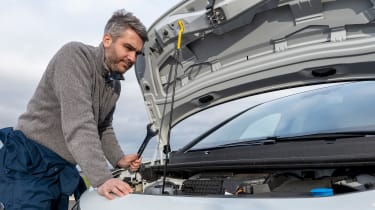
But what does an electric car service consist of if there’s no oil to change? As with any car, it turns out, the technicians check your brakes, headlights and tyres. They will also inspect the vehicle’s charging cables, as well as the high-voltage battery.
I am thankful that I don’t have to spend the best part of a day trekking across town to drop my car off for it to be serviced. I’m much happier sitting at home with software improvements being transferred over-the-air. There have been several of these, all carried out overnight and free of charge.
Regardless, my time with the ID.3 has come to an end. There have been times when I’ve wished it were a little bigger, and others when the half-baked infotainment set-up left me wanting. Yet overall it’s been dependable, comfy and easy to live with. Yes, efficiency has dropped since I was first given the keys back in September last year. The warmer temperatures saw the VW good for 300 miles, but this fell as low as 220-240 miles during colder spells.
I mentioned this on Twitter recently, and a follower (thanks @MrSaffron!) replied, saying that below eight degrees Celsius, the 77kWh ID.3 requires more heating power than smaller-battery models. He suggested a software update might lower the trigger point for the heater; VW couldn’t confirm when this might be available on existing cars, but said newly built ID.3s already have this software – straight from the factory.
I digress. Over nearly 5,000 miles the ID.3 has proven almost completely reliable; a flat tyre and an error with the parking sensors – the latter fixed over the air, naturally – are the only issues I’ve experienced. And the first of those was my fault.

For me, going for the top-spec model was worth it, too. As well as that bigger battery and longer range, it genuinely has all the equipment I could’ve asked for, except maybe a panoramic glass roof.
Unfortunately, at the time of writing, VW had paused orders of our Tour Pro S model, due to high demand and the ongoing semiconductor shortage. As it stands, the maker is offering just one variant, the ID.3 Life Pro Performance, fitted with the smaller 58kWh battery.
However, with LED lights, wireless phone charging and sat-nav, even that car comes well equipped as standard, and it should be much cheaper to buy.
Volkswagen ID.3 Pro S Tour: third report
Our Volkswagen ID.3 benefits from some over-the-air updates
- Mileage: 7,590
- Efficiency: 3.2 miles/kWh
Connected cars are the future, apparently. Whether that’s our sat-nav warning us of congestion en route, or being able to keep tabs on things like EV charge status, having our pride and joy trade info with its manufacturer and other drivers will, we’re told, make our lives easier.
If I’m honest, I’d largely dismissed this technology as a bit of a gimmick. But my perspective changed recently. I’d spotted notifications popping up on my VW ID.3’s infotainment screen a few times, informing me that the car was ready for an over-the-air (OTA) update. All I had to do was accept the message and leave the vehicle parked up overnight. All being well, I’d wake up to a car that was that little bit better than the one I had been driving the day before.

Over the past few months I’ve installed updates to the ID.3’s user manual, as well as “functional enhancements” for the lights. In early December, however, I noticed a selection of warning lights had stacked up on the dashboard, alongside messages suggesting various safety systems – including the car’s automatic emergency braking (AEB) set-up – weren’t functioning as intended.
Ordinarily, I’d have called up Citygate Volkswagen in west London and booked my car in as soon as possible. Yet only 48 hours later, an update appeared on my car’s central screen. It said I couldn’t drive the car for the best part of three hours, but I needn’t visit the workshop and, better still, it wouldn’t cost a penny in diagnostics or repairs – not to mention time ferrying the car to and from the dealer. It’s worth noting that while these updates are currently free, VW has said that some will be chargeable in the future.
The next morning the messages had cleared and I could drive the ID.3 safe in the knowledge that my family was protected every time we set off. I’d rather the car didn’t malfunction in the first place, but I can’t argue with the convenience of these potentially life-saving updates.
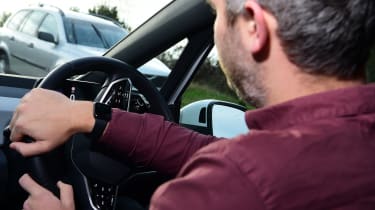
If experiences like these are anything to go by, there will surely be a time in the not-too-distant future when a vehicle’s myriad sensors can safely sign off your hatchback’s annual maintenance checks without you having to leave the house.
The convenience doesn’t end there, either. I’m still enjoying the ID.3’s relatively long range, even if efficiency has taken a hit recently. I’m currently managing around 3.2 miles per kilowatt hour, down from 3.7mi/kWh in September. That new figure means a range of around 245-250 miles – well shy of the WLTP -rated 338-mile maximum, but more than enough for my average use.
The VW continues to be a really easy car to live with, though – quick, comfortable and simple to drive. The long kit list ticks every box you’d expect, but I do wish the big 77kWh battery was available in the less-expensive Life or Family trims.
Volkswagen ID.3 Pro S Tour: second report
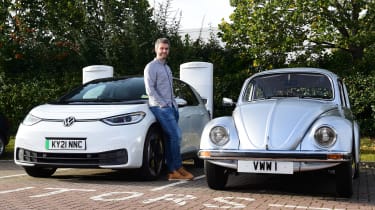
The iconic VW People’s Car gets to meet its all-electric spiritual successor
- Mileage: 6,824
- Efficiency: 3.5 miles/kWh
Volkswagen translates from German to English as “People’s Car” – a concept dreamt up in Germany in the years before World War II. The idea was, in short, to manufacture a cheap, simple-to-produce runaround for the country’s then-new road network.
That car was the “Type 1”, latterly and more comonly known as the Beetle. It was designed and engineered under Ferdinand Porsche, and went on to sell more than 21 million units over the model’s 65-year uninterrupted production run – a figure that doesn’t include either of the two “New Beetles”, launched in 1997 and 2011.

Fast forward to 2021, and Volkswagen is hoping it can bring new meaning to the term “People’s Car” with the help of its ID. electric sub-brand. It already boasts two distinct models – the ID.3 and ID.4 – and there are many more variants on the way.
Volkswagen’s range of ID. cars has the potential to be even more significant than the Beetle was. They launch at a time when world leaders are putting ever-increasing emphasis on limiting climate change, with the British Government having already confirmed a ban on the sale of new petrol and diesel cars by the end of the decade.

So, having recently taken delivery of a top-spec ID.3, I thought it was appropriate to draw some parallels with the original People’s Car. Luckily, Volkswagen UK’s heritage fleet is home to an immaculate 1977 Beetle 1200L, so we paid it a visit.
The first thing you notice when you sit in the Beetle is the sense of space, a feeling that’s also apparent in the ID.3. True, the former does without any sort of crash protection – even the seatbelts fit loosely across your torso – but the positive trade-off is an airy cabin with room for four people.
The Beetle’s engine is mounted behind the back seats and powers the rear wheels, just like the electric motor does in the ID.3. And while the controls are much heavier in the classic car, both models offer that old-school feeling of being pushed through corners rather than being pulled.
But here endeth the similarities. In the days of power steering, punchy electric motors and regenerative brakes, the Beetle feels positively archaic. Every trip is a test; turning the car around for photographer Pete Gibson felt like a workout, while slowing for junctions or approaching traffic required a level of anticipation that simply isn’t necessary when driving the ID.3.
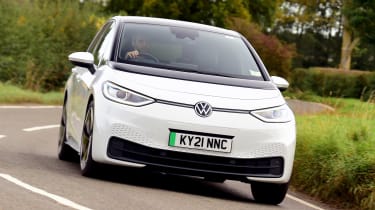
And then there’s the in-car tech. The Beetle doesn’t even have a radio, let alone a modern touchscreen with nav or wireless phone charging. There is a single central speedo behind the steering wheel, however; perhaps the ID.3’s simplified driver’s display is an unwitting nod to its classic forbear.
Ultimately, though, while pootling around in the Beetle was fun, I was glad to go home in the ID.3. As a self-confessed petrolhead, I’ll always crave the interaction of changing gear myself and hearing the revs crescendo, but as a car to drive day-in day-out, EV pips petrol every time.
In fact, the more time I spend in the ID.3, the more I’m taken by the VW’s impressive usability. As I mentioned previously, our car is the range-topping Pro S Tour, so it’s got the largest 77kWh battery and plenty of kit. Even as the nights draw in and the temperatures drop, I’m consistently getting more than 250 miles (down from around 280-290 miles in the summer) on a charge.
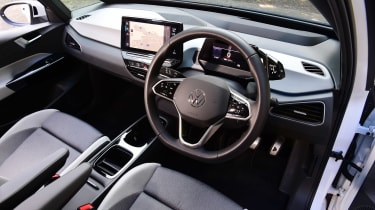
It’s quick, quiet and easy to drive, and on all but the worst road surfaces it’s comfortable too. The technology on board is extensive but well integrated, and doesn’t feel intimidating like it does in some of the VW’s rivals. Plus, with wireless Apple CarPlay , I can keep my phone in my pocket and still have access to all my media, calls and nav – either via Waze or Google Maps.
Probably my biggest frustration is the boot, and the complete lack of a front trunk – or “frunk” as it’s colloquially known in EV circles. At 385 litres, the boot capacity is five litres bigger than you’ll find in a petrol VW Golf, but that’s with the movable floor in its lowest position, which leaves you nowhere to store the charge cables.
Volkswagen ID.3 Pro S Tour: first report
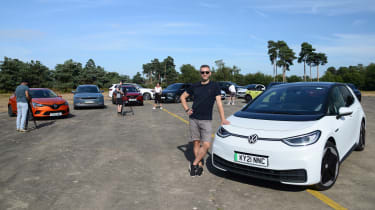
The impressive Volkswagen ID.3 EV joins our fleet fresh from winning an award from our sister title
- Mileage: 5,369
- Efficiency: 3.7 miles/kWh
When we get thrown the keys to a new long-term test car, it’s customary to take a while to let things bed in. What you think after a day or two can change dramatically over the weeks or months that follow.
But my new Volkswagen ID.3 was afforded no such luxury. Less than a week after it arrived, it was thrust into action with a run to Suffolk, where it joined the annual Car of the Year line-up for Auto Express’s sister title Carbuyer .

Alongside sports cars and SUVs , the ID.3 was judged the Best Small Company Car, as it was in the Auto Express New Car Awards in July. And it’s easy to see why. The demise of diesel is well documented, with strong EV incentives meaning business users are flocking to battery-electric cars in their droves. Paying just one per cent Benefit-in-Kind (BiK) tax makes a model like the ID.3 – if it suits your motoring life – a no-brainer.
Quickly comparing my ID.3 – a top-spec Pro S Tour variant, with the big battery and loads of kit – alongside a similarly equipped Golf (1.5 eTSI R-Line 150 DSG), shows how much the average company car driver will benefit. A higher-rate tax payer could save over £3,000 per year in BiK alone – or more than £9,000 over the course of a typical lease.
The age-old argument about range anxiety is beginning to fall on deaf ears, too. With more and more models now capable of 300 miles on a charge (the ID.3 Tour will do 340 miles officially, or around 290-300 miles in real-world driving), I’ve found very little need to rely on the patchy public charging infrastructure.
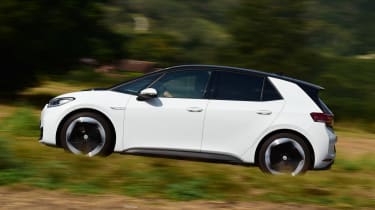
I’ve driven a lot of ID.3 models since the car was launched, and have always been keen to run one on the Auto Express fleet. Due to the nature of my job and the fact that I don’t have a driveway at home where I can just plug the car in, it made sense to opt for the biggest battery, which for the time being means I was forced to choose the most expensive Tour specification.
I’d be lying to suggest this is the sweet spot in the range – that accolade goes to either the entry-level Life or well equipped Family variants – but it does come with a long list of standard kit. As well as that large battery and plenty of range, Tour models get 19-inch alloy wheels, two-zone climate control, a head-up display, and keyless entry.
My car also has a few options, including 20-inch wheels and a heat pump. We hope the latter will help preserve that long range through the colder months to come.
Frustratingly, however, Tour models lose the rear bench in favour of two separate seats in the back; Volkswagen tells us a five-seat layout is due later this year. Boot space is on par with that of a petrol Golf, but with the boot floor in its top position, I’m forced to remove one wheel from my daughter’s buggy in order to get it in.
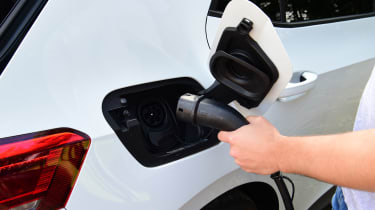
However, all this pales into insignificance when you switch the thing on and take it for a drive. The ID.3 is over 500kg lighter than my previous fleet car, a Mercedes EQC , and its lower centre of gravity means it feels much more agile as a result. And while the VW’s 201bhp might not sound like that much, the power delivery is instant and grip is good. Refinement, on the whole, is fine too, although those big wheels do generate more road noise than I’d like at speed.
So far, then, I’ve been enjoying the ID.3’s engaging handling, efficient powertrain and long range, plus its spacious cabin and minimalist design. There’s a lot to assess in the coming months, but so far, I’m loving life with the UK’s Best Small Company Car. 7,590 miles
*Insurance quote from AA (0800 107 0680) for a 42-year-old in Banbury, Oxon, with three points.
- Electric cars
- Family hatchbacks
Richard has been part of the team for over a decade. During this time he has covered a huge amount of news and reviews for Auto Express, as well as being the face of Carbuyer and DrivingElectric on Youtube. In his current role as deputy editor, he is now responsible for keeping our content flowing and managing our team of talented writers.
Most Popular

New MG3 2024 review: hybrid supermini is a total bargain

New Dacia Duster 2024 review: an all-round improvement and still great value
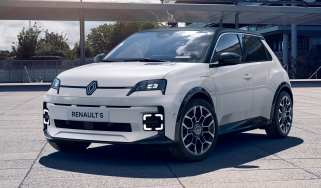
Deuce! New Renault 5 Roland-Garros looks just like the 2023 concept car

- Car Reviews
Volkswagen ID.3 review
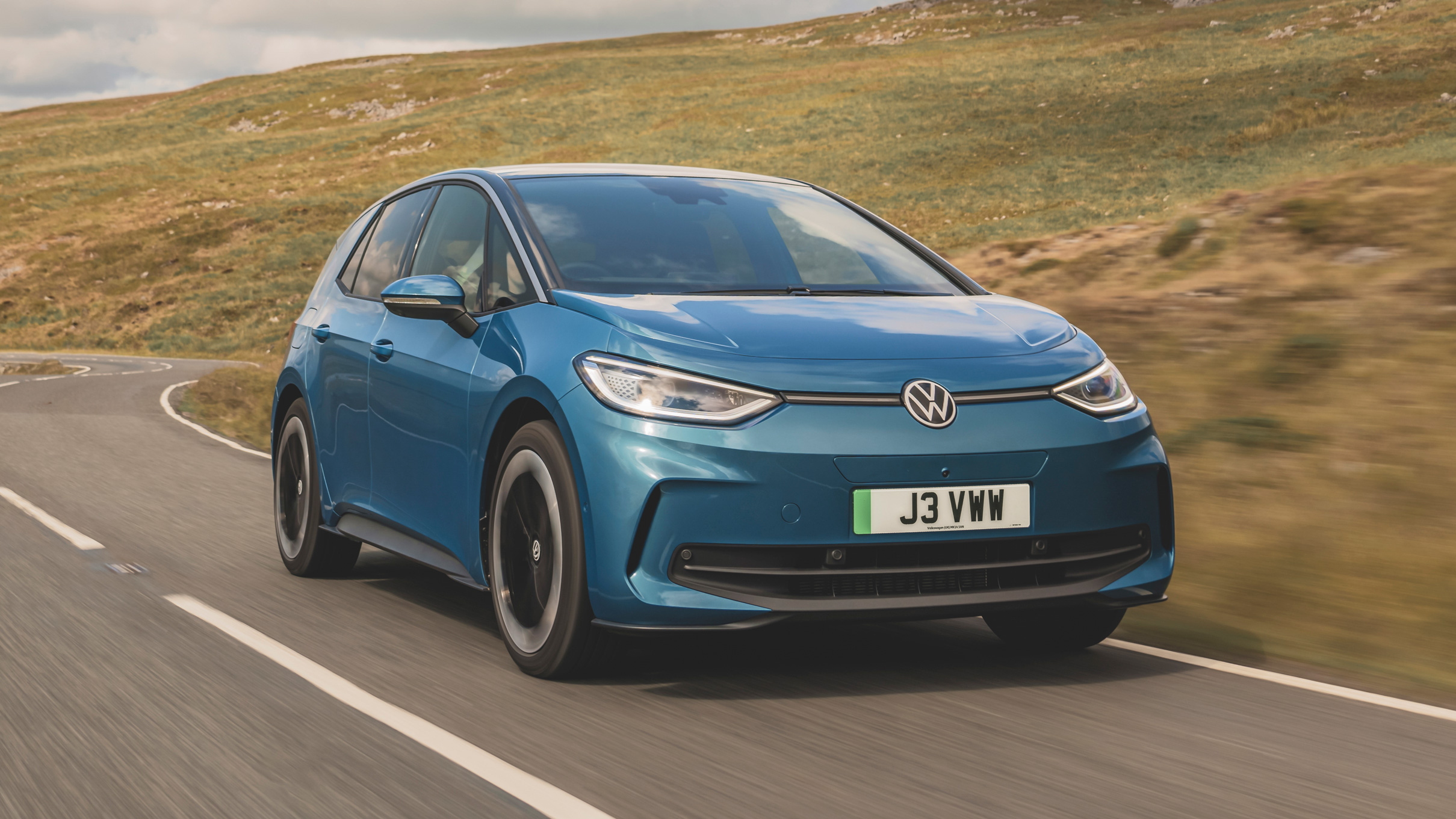
Gorgeously relaxing and refined, now has proper VW quality, roomy for four
Not that engaging, still some driver-interface annoyances
What is it?
This is Volkswagen 's mainstream electric family hatch, given an early facelift. Which it rather needed.
First because having arrived among the vanguard of hatches this size, it inevitably found itself surrounded by newer rivals stealing some of its thunder. And second because the original ID.3 just wasn't quite Volkswagen enough. It didn't have the necessary feeling of interior quality. Plus it was in many ways quirky or just plain irritating. This is the fix.
Those new hatchback rivals? The Renault Megane electric , MG4 , Vauxhall Astra Electric and Peugeot e-308. An all-new Nissan Leaf will be along shortly. You might also be cross-shopping with any number of compact-ish electric crossovers such as the Kia Niro EV and Hyundai Kona electric , both on their second generations, and Honda e:Ny-1 .
WHAT ARE THE CHANGES?
The facelift makes the ID.3 slightly less oddball. VW pitched the first ID.3 as the car to pick up the baton from the Golf . But it wasn't that. Whereas a Golf always feels comfortingly conventional, the ID.3 looked a bit radical and its operation took a bit of learning. You could imagine people taking half an hour's headscratching before they managed to drive a rentacar ID out of the airport multi-storey.
The bonnet now looks longer, because its old half-black split paint treatment has gone. So the ID.3 looks more like a car and less like a future spacepod. Changes to the front bumper make it look wider as well as helping some air slip past the wheels more easily. The front wings look longer because they're no longer broken up by a badge plaque. The tail lights are wider and more detailed.
The original ID.3 was sparse inside, with acres of angular and hard-surfaced plastics. Maybe this was VW telling us we'd arrived in a new world. Maybe it couldn't afford soft mouldings in the aftermath of the diesel scandal.
But whatever, VW's customers rose up with one voice: if this was supposed to replace the Golf, they wanted the same sense of premium quality please. VW has now acquiesced. The dash and doors are now clad in soft-touch and stitched surfaces. And much nicer it is in here too.
Like the furniture, the original screens and software felt like they'd been done in a rush. Software updates have improved the screen systems. Although perhaps not enough.
AND WHAT'S THE SAME?
It's a purpose-built electric platform. Unusually, it's rear-drive, the motor and its inverter being tucked under the boot floor. 'Rear-engined like a Beetle', as they say in Wolfsburg.
This means a long wheelbase, with the slab battery tucked under the passenger cell. Thus the roof is taller than you'd expect. Still, it's a roomy family car, more so than a Megane or electric Astra, thanks to better leg space for the back passengers.
RWD means a tightish turning circle, but it also means the regenerative braking is fairly meek, to avoid the danger of rear-wheel skids on slippery surfaces. That's why FWD or AWD e-cars can extract more regeneration and have the potential to be more efficient in variable-speed driving.
Useable battery sizes are 58kWh (ID.3 Pro) and 77kWh (ID.3 Pro S). A smaller 45kWh battery option has been dropped, as has a less powerful motor. Both versions of the post-facelift car have the same 204bhp.
Which means the cheaper one is slightly quicker – 7.4 sec 0-62 instead of 7.9 – because it's 100kg lighter. Frankly, compared with the Renault Megane electric, both are too heavy.
The WLTP range figures are 266 miles for the smaller battery and an impressive 347 for the bigger one. That's a likely four hours motorway driving (240 miles) on the 77kWh car, and more miles than that in any other UK condition. For extra info on range, charging and energy consumption, click the 'buying' tab.
HOW IS IT TO DRIVE?
A Golf is comfy and refined, but also has a gently amusing side. You might expect the ID.3 to be similar, especially as rear-drive has the potential to add a little cheekiness.
But no. VW has doubled down on the comfort and refinement. It's stable, smooth-riding and wonderfully quiet – not just in its absence of engine sound of course, but also the limo-like hush of tyres, suspension and wind.
It's stable, relaxed and precise in its steering, accelerator and brakes. But there's no feedback or engagement. The Megane, MG4 and Astra are all more fun. For more details click the 'driving' tab.
Want to know what the best electric cars are? Click here for the top 20
Our choice from the range
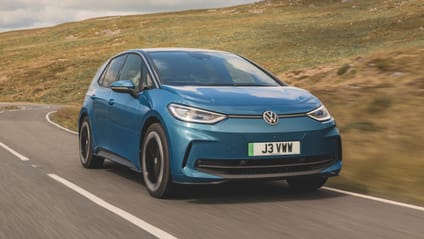
What's the verdict?
Although the Nissan Leaf was a decade ahead of it, the ID.3 was quite a radical car for VW. The shape, software and interior were admirably brave, but in hindsight maybe a bit too much. It was a massive engineering effort, but shoved on sale in a tearing rush as an atonement for dieselgate. The cutting of corners – cheap cabin furniture and rough-edged software – was painfully obvious.
The facelifted car's control systems can still be infuriating, but their actual logic and graphics have been steadily improving with OTA software updates.
The facelift addresses the too-radical-for-some exterior, and bare cabin. It's a nice place to sit now.
The ID.3's best qualities haven't been messed with. It's roomy, quiet, comfortable and soothing. It's efficient and has a good range. It's satisfying to drive, just not much fun for a hatchback. Albeit more fun than the crossovers you might be cross-shopping with.
All of which gives it a definite character and likeability among an increasingly busy lineup of rivals.
How does it compare?

Volkswagen ID.3 150kW Life Pro Perform 58kWh 5dr Auto [120kW Ch]

Nissan Leaf 160kW e+ N-Connecta 59kWh 5dr Auto

Hyundai Kona Electric 160kW N Line S 65kWh 5dr Auto

Kia e-Niro 150kW 4 64kWh 5dr Auto
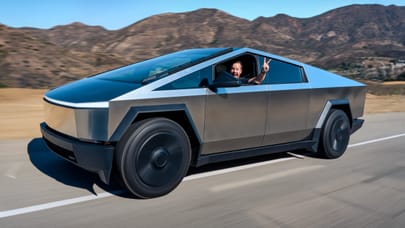
Here are 12 electric pickups you need to know about
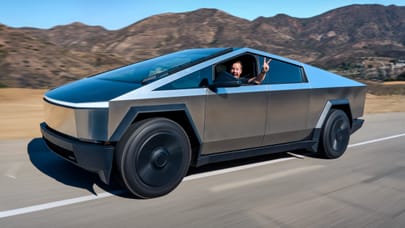
Tesla Cybertruck

These are the 12 best hot hatches of all time
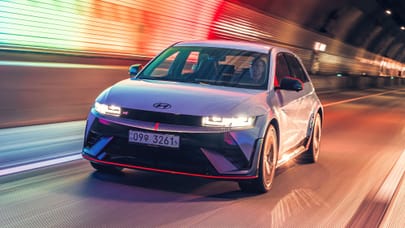
Top Gear's top 20 electric cars
Trending this week, mercedes-amg cle 53 coupe review: amg goes back to the script, this modified porsche 911 looks like it belongs on a nimitz-class aircraft carrier, farewell, modified toyota bz4x: here's what we've learned after six months, question of the week: do you prefer physical buttons or touchscreens, woah, a polestar 5 recharged from 10-80 per cent in *10 minutes*, subscribe to the top gear newsletter.
Thank you for subscribing to our newsletter. Look out for your regular round-up of news, reviews and offers in your inbox.
Get all the latest news, reviews and exclusives, direct to your inbox.
By clicking subscribe, you agree to receive news, promotions and offers by email from Top Gear and BBC Studios. Your information will be used in accordance with our privacy policy .
Sorry, something went wrong

Try BBC Top Gear Magazine
Primary Navigation Mobile
- Vans & Pickups
- – New car reviews
- – Used car reviews
- – New Car Awards
- – Car companies
- – Electric cars
- – SUV Cars
- – Owner reviews
- – Extended reviews
- – Used cars for sale
- – New cars for sale
- – Nearly new cars for sale
- – Car history check
- – Car choosing tool
- – Free car valuation
- – Sell my car
- – Car Leasing
- – Car leasing special offers
- – Car leasing advice
- – Car Finance
- – Car finance advice
- – Get finance quote
- – Car loan calculator
- – Car Tax advice
- – Best Cars
- – Best car products
- – Car buying
- – Car glossary
- – Used cars
- – Car news
- – Car comparison
- – Car Jargon Explained
- – Car tax calculator
- – How benefit-in-kind BIK tax works
- – Buy a car warranty
- – Compare car insurance
- – Find a car's insurance group
- – GAP insurance
- – Car insurance advice

Volkswagen ID.3 long-term test
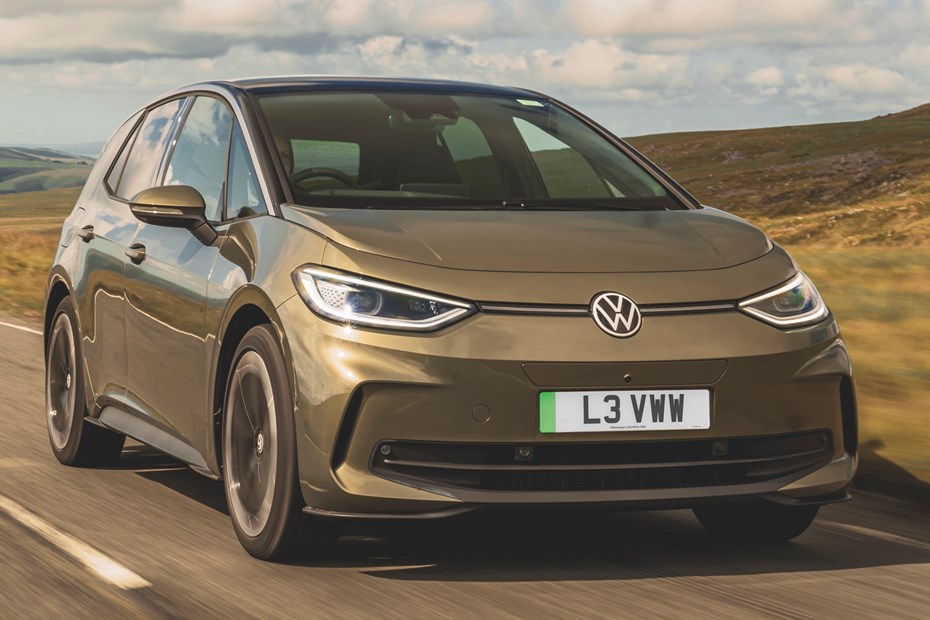
Written by Keith Adams Published: 13 February 2024 Updated: 14 February 2024
Murray Scullion on living with VW’s hugely important ID.3. This review is broken down into chapters – use the links below to navigate between them if you don’t fancy reading the whole article.
Update 1: Welcome Update 2: Performance and handling Update 3: Comfort and interior Update 4: Practicality Update 5: Head-to-head Update 6: Would I recommend one?
Update 1: Welcome
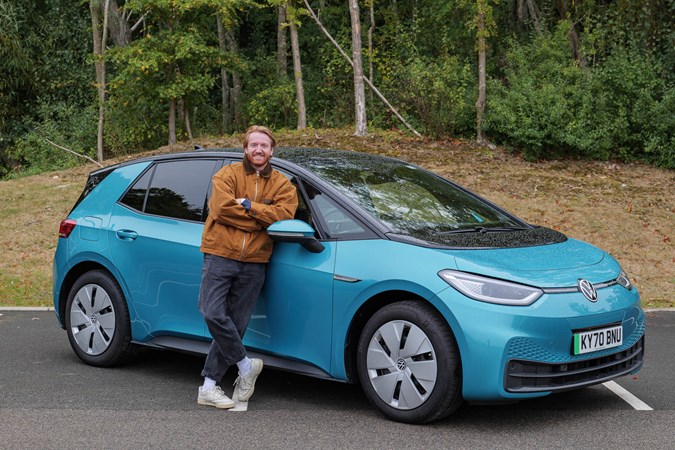
According to VW, the ID.3 will become the third landmark in the company’s history, behind the Beetle and the Golf .
It’s VW’s first attempt at a purpose-built electric car, and reassuringly, the company has come up with a fresh-sheet design. It feels like it too. It’s…very futuristic, both inside and out. Will this begin to grate? Only time will tell.
The way I see it, there are two big questions to answer during my six months with the car. The first; is it the best electric hatchback on sale? The second? Would I choose one over a Golf? Two big questions with big answers.
VW is all-in with the ID.3 and it needs to be best in class in order to be a success in my eyes.
Electric car sales are ramping up, and there are thousands of customers out there on the verge of making the switch. If you want a reliable VW hatchback, do you go with the Golf or ID.3?
What about the spec?
We’ve gone with the Max Pro Performance 58kWh. In English, that’s second from top spec, with the 58kWh battery. There’s loads of interesting tech included, which we’ll go into detail later. Highlights include:
> Augmented reality head-up display > ID.Light > ‘Natural’ voice control > Fast charging
The WLTP-backed range is 260 miles (it’ll be interesting to see how close to that I can get), the motor makes 204hp, and it’ll cover the 0-62mph dart in 7.3 seconds.
Official charging time from a 7.2kW charger (think street parking or one you’d have installed at home ) is 9hr 30 minutes all-in. On the 100kW rapid chargers (the ones found at service stations) it’ll gain 180 miles in 30 minutes.
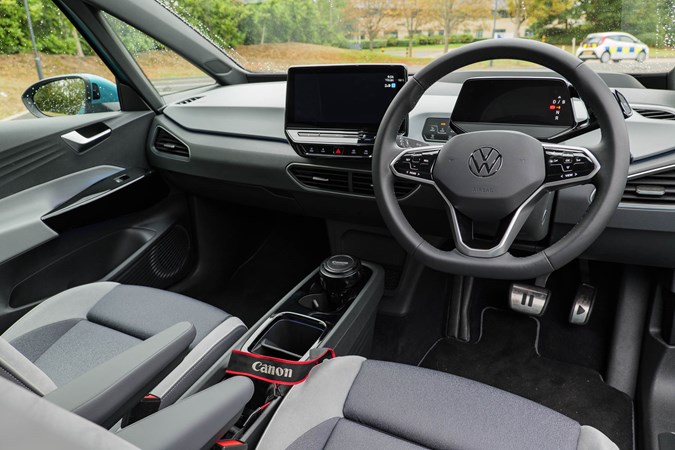
Any extras?
I’ve kept extras pretty slim. First up is the heat pump. It takes care of warming up the car, meaning less energy is needed from the battery. It cost £1,000 and VW promises it improves range.
The only other extra is the excellent Makena Turquoise paint. That was £645 and not everyone agrees with how brilliant it is.
How’s it going so far?
So far, so good. A month in and it still feels very, very futuristic. Sitting down and not having to switch a button (or turn a key! Remember that!?) takes some getting used to. As does the gear selector.
It’s a rotary dial you twist (pic below), located behind the steering wheel. I love it. It frees up so much space around the centre console. But it seems like the way you pull/push to get drive/reverse is the opposite way round than would be natural to me. Nevertheless, I think I’ll get used to it.
I absolutely adore the seats too. They’re not leather (overrated) and you simply melt into them. Adjustable armrests for both front passengers are a touch too.
Problems? Only one minor one. The first time I got in it I couldn’t release the blind on the panoramic sunroof. It’s touch activated (like pretty much everything else in the car) and computer was just saying no. However, the next time I got in, it worked fine. And has ever since.
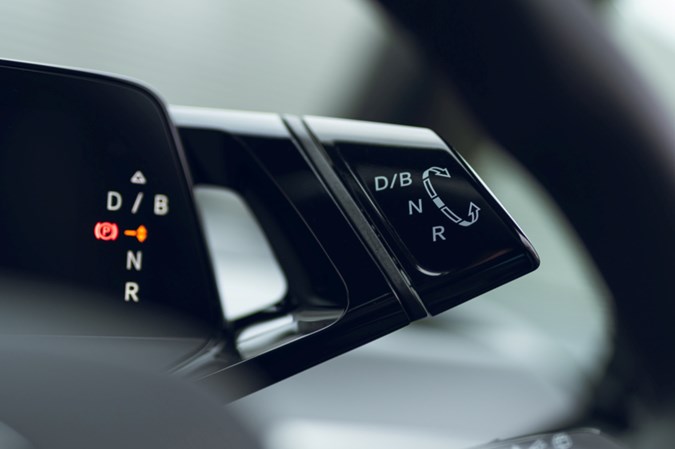
Update 2: Performance and handling
It’s about time we talked about performance. With internal combustion engine cars (petrol and diesel to you and me) the pertinent performance figures are usually 0-62mph times and top speeds.
But with electric cars, range is by far and away the most important indicator. According to the WLTP figures, my ID.3 should do 260 miles. My lifestyle is maybe slightly different from many electric car drivers. I live in London and the majority of my driving is on the motorway as I use public transport to get around the city (love a bev).
Range is around 200 miles. That’s in Eco mode (more on that later) with the regen braking on. This is around 23% down on WLTP. But it’s the same for most other electric cars (minus perhaps Tesla).
Batteries don’t perform as well in the cold. So in December, the range dropped to 190 miles. This isn’t a huge issue because of how well the range indicator performs. If it says 150 miles worth of battery, you’ll be able to do 150-ish.
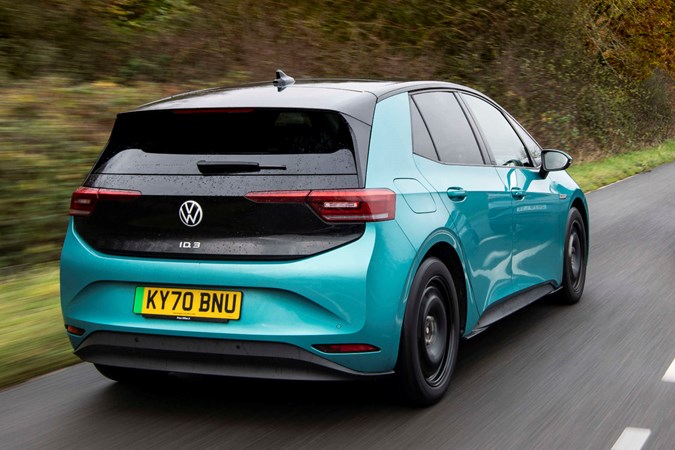
Now, to get back to the traditional performance testing I mentioned earlier. The 0-62mph time is 7.3seconds and I can attest to this.
There’s also 229lb ft of torque on offer. This figure is largely meaningless to most people. But I can say that you benefit from those strange combo of letters and numbers off the line and on the move.
The 0-30mph sprint in the ID.3 is pretty strong for a sensible family hatch, while the 20-50mph sprint is also peppy. This offers great overtaking flexibility and it’s really handy for nipping in and out of lanes.
Drive modes
There are three different drive modes to choose from. In essence, this allows the car to alter suspension stiffness, urgency of power and weight of steering.
There are three modes. Eco, Comfort, and Sport. The differences are subtle.
Eco dials everything back, sets the climate control to be less wasteful and dulls throttle response. This is all in the aid of maximising your range and minimising your consumption.
Comfort is the middle ground in all of this, with suspension set to its most pliant mode. Sport dials up the throttle response and stiffens everything.
You’d be hard pushed to notice too much of a difference between the modes. Your right foot needs to exert less effort to achieve full acceleration in Sport. And in Eco you do use less electricity.
I keep it in Eco mode most of the time in order to maximise the all-important range. I suspect most ID.3 drivers do the same.
What about the handling?
I’ve recently driven the new Cupra Born . It’s mechanically similar to the ID.3 except that it’s supposed to have a bit more of a sporting twist. It gets harder, sportier suspension and bigger wheels.
What I found amazing is how little difference there was between it and my car.
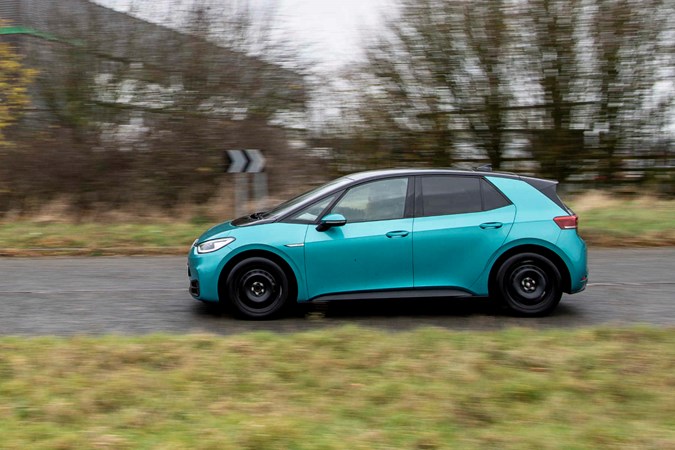
I’d even go as far as saying the VW is pretty good fun for a family hatch. The acceleration is strong from the battery and the steering is goldilocks – in that it’s not too heavy or too light. On a B-road it flows nicely and it can get a shift on.
While on city streets it’s direct enough that manoeuvring between parked cars is easy. Good turning circle too, perfect for negotiating tricky mini roundabouts and driving around abandoned Ubers.
Update 3: Comfort and interior
I’ve been living with the ID.3 for three months now. And the interior (well along with the turquoise paint) is still the talking point for most passengers.
A fair few people have been in the front and rear now and none of them can quite get over how sparse it is for a £40k car. I think people have come to expect leather and buttons as premium, something the ID.3 is bereft of.
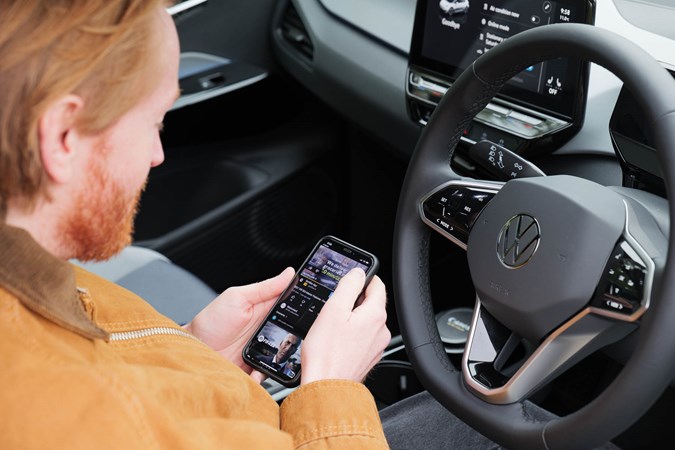
VW might have shot itself in the foot here. As a very boring car enthusiast, I appreciate the pared back aesthetic, huge amount of space in the front, and clever touches like the wireless phone charging compartment. I don’t like leather seats, so that’s another tick for the car.
For regular folk it all seems a little too less-than-premium. One passenger noted that it was ‘very grey in here’ before audibly sighing. Regular folk notice little things too. More than one person has commented on the lack of alloy wheels.
Another quick note about this car. VW has done some phenomenal cost savings. If you really look for them, you’ll find some cheap-feeling plastics. Like the door cards, for instance.
But the most annoying piece of penny pinching is the rear window controls. From the driver’s seat, rather than having four switches for four doors, you get two switches and a button to switch from front windows to rear. Whenever I need to lower a rear window, I always forget this.
What’s it like for passengers?
I’ve had zero complaints from passengers about space or comfort. In the front, thanks to no gearbox et al, there’s loads of space for passenger’s stuff.
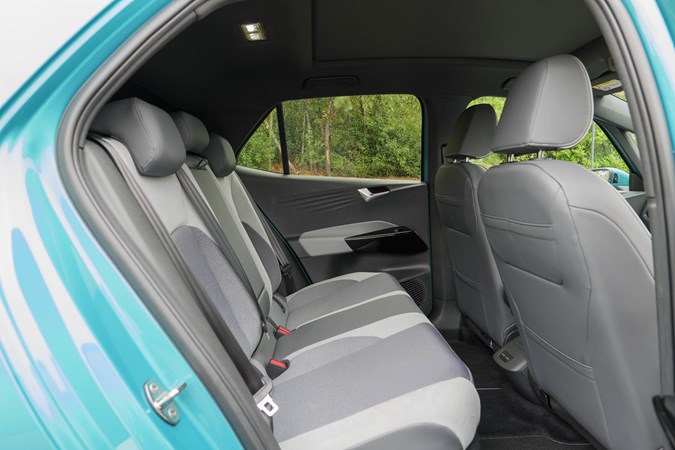
In the rear, the floor is completely flat (once again, thanks to its electric layout). This ultimately means should you have three passengers back there, the person unlucky enough to be in the middle seat at least doesn’t have to awkwardly put their feet atop of a transmission.
The twin USB-C slots for charging phones in the rear is a nice touch. So far, none of my passengers have had a phone that uses a USB-C cable though.
Infotainment
Your understanding of the VW ID.3’s infotainment system is paramount to you enjoying it. Let’s start with its foibles. Occasionally it will take a while to ‘wake up’ as it were.
This means on a cold day, when you’d like to put the heating on, it might come up with a message that says: ‘Sorry this function is currently unavailable. Please wait.’ This is utterly infuriating even if it is only for a short amount of time.
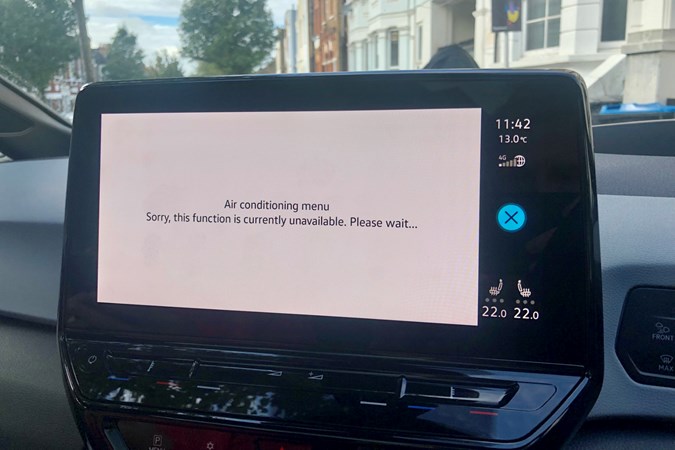
Apple CarPlay is a massive thing for me. I don’t know if there’s been an innovation in the last 15-20 years that’s more important to the car buying public. The wireless system in this ID.3 is much like any other VW. For me personally, that means it works perfectly 90% of the time. About 5% of the time it simply does not work at all for the entirety of the journey, and the other 5% of time it’s horrendously slow.
The nav is dead fancy. It’s an augmented reality jobby. This means it relays instructions, such as which junction to take, on the windscreen via arrows. The arrows guide you specifically to the road you need to take, rather than simply a vague ‘go right here’ thing.
I think it’s genius. If you really like your tech I’d recommend it. If you think that sounds like a gimmick, I’d avoid it.
VW’s WeConnect ID app displays how much charge the car has, what speed it’s charging, allows you to search for charging stations, and to set the temperature. It’s refreshingly simple to use. Can be buggy though, and sometimes doesn’t allow me to turn the heating on remotely.
Update 4: Practicality
Practicality is a hugely important area when testing a car. After all, cars are mostly a means of transporting things and people to other things and people.
The ID.3 is a traditional hatchback shape. But it’s, of course, electric. Theoretically it should be more practical as it has lots of little batteries that are easier to package, rather than a huge engine up front like in a petrol or diesel powered car. Right?
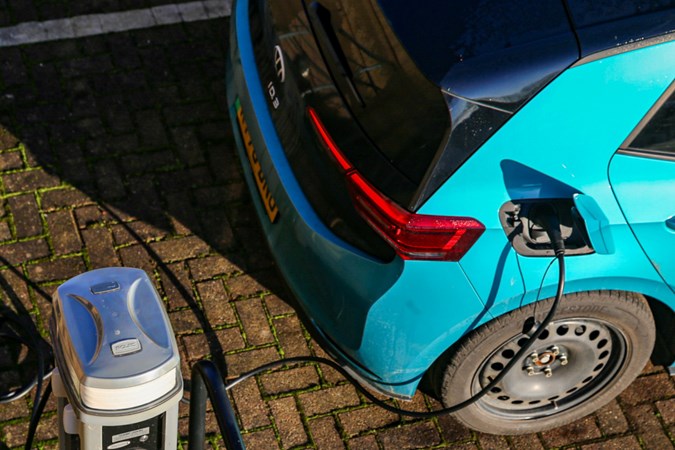
What’s the bootspace like?
We’ll kick things off with a gripe. A petrol/diesel car has an engine in the front. Whereas the ID.3’s batteries are in the middle of the car, underneath the passengers. This means there should be a little front boot (or frunk as the Americans call it) like with the Ford Mustang Mach-e . Wrong.
This means you have just one boot, like a petrol/diesel car. It’s 385 litres in capacity. A Golf’s is 380 litres. You see what we’re getting at here? It’s not really any worse or any better.
The boot itself is flat, wide but a bit shallow. At least the underfloor storage is good for keeping the charging cables in.
And the space in general?
Once upon a time a medium-size hatchback was large enough transport for a small-ish family. Now, with huge prams, bags and child seats, this isn’t the case.
The truth is if you have a couple of kids an ID.3 probably isn’t practical enough for you. But dare we say it, it’s the same case for most cars this size.

Nevertheless, the ID.3 is certainly practical enough if you’re not blessed with the drip of multiple runny noses. Up front, because the gear selector is up next to the steering wheel, there’s loads of room. Two one litre bottles and two phones will easily fit into the central storage area.
In the rear there’s a flat floor. So the middle seat passenger doesn’t need to go legs akimbo. Two USB-C slots back there too.
It’s a doddle to park. The image from the rear camera is clear and sharp, plus it’s hidden in the VW badge. This means while it’s not in use it’s not exposed to the world, making it less likely to get caked in mud.
The view out the rear view isn’t brilliant because of the narrow windows, but it’s something you get used to.
One negative on the parking side comes courtesy of its big brain. It will slam on the brakes if it thinks it will hit something. A good safety feature, obviously. However it’s far too keen to kick in when parallel parking on a tight street. Especially as it knocks it into neutral. So it’ll abruptly stop, then you need to select Drive again. Annoying.
Update 5: Head-to-head with the VW Golf
On test: VW Golf Style eHybrid
TL;DR The Golf is a good halfway house (but not the best) if you can’t make electric work. But I’d choose the ID.3.
At the start of this long-term test I said that a true sign of the ID.3’s success would be making it better than a Golf. And I think VW has succeeded.
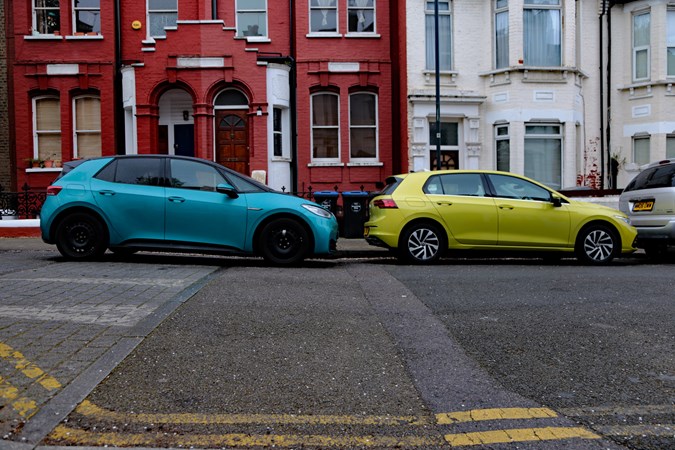
Let’s start with the most subjective subject first. The Golf is safe and understated, while the ID.3 is much funkier and youthful.
The ID.3 doesn’t have an engine, so doesn’t need a long bonnet. This means it can have a different shape to a conventionally powered car. Shorter bonnet = shorter, squarer, rounder design. This does make it look a bit blobby, but different nevertheless.
The Golf’s longer bonnet leads to a slightly more elegant shape. It looks a bit less podgy. But at the same time, it isn’t all that different to the previous-generation Golf. Or the one before that…
The interiors are fairly similar; you’ll notice more than a few shared parts. The ID.3’s is more pared back, has more room (thanks to the gear selector being near the steering wheel) and also feels a bit cheaper.
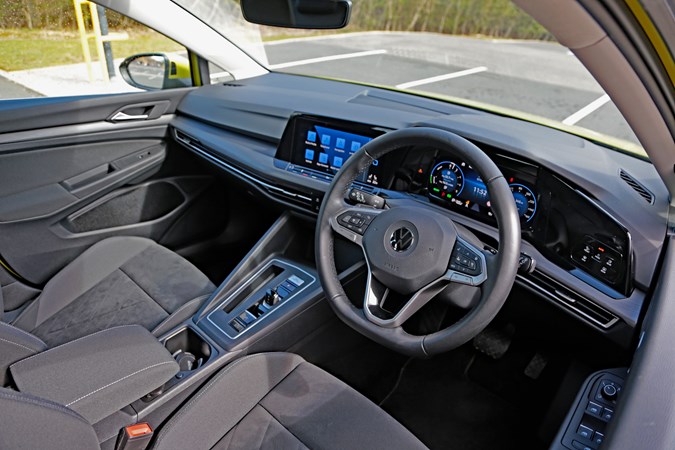
Some of the plastics (most notably the door cards) feel scratchier. But the ID.3 has more tech. The infotainment is as annoying in the Golf (buttons that aren’t really buttons, screens that take forever to boot, Apple CarPlay randomly cutting out) as it is in the ID.3.
Practicality
The ID.3 has a larger boot than a regular Golf. And a considerably bigger one than this eHybrid PHEV we have on test here.
Rear seat passengers won’t be able to tell much of a difference other than the Golf has a tunnel running down the centre of the car and the ID.3 doesn’t.
This is where the cars differ the most. The eHybrid is a plug-in hybrid and the most electrified Golf on offer. It utilises a 1.4-litre petrol engine and an electric motor that make 204hp, giving it an official 42-mile electric range and a fuel consumption rating of 313.9mpg.
You’ll really struggle to achieve those kinds of heady figures. However, on a 77-mile motorway stretch I achieved 69.9mpg with a full battery to start with and a few miles left on it at the end of the journey. I reckon 30 miles is a good guess at what electric-only range it can do.
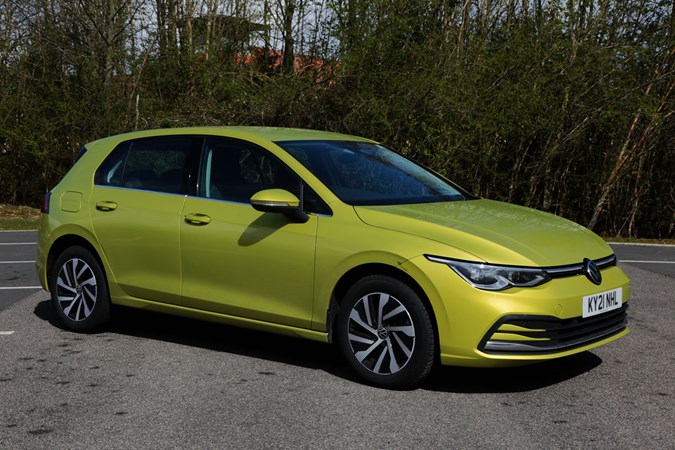
To drive it’s effortless. VW’s engineers have done a great job at ensuring a fuss-free handover from electric to petrol. The six-speed automatic ‘box is rarely caught out and the 7.4second 0-62mph time is more than enough to make mincemeat of the motorway slog.
The ID.3 has a 7.3second 0-62mph. It feels much brawnier off the line but past 30mph the Golf really catches up. It feels heavier than the Golf, but oddly has lighter steering.
I won’t bang on about degrees of steering feel or inertness but I will say the ID.3 is quieter and more relaxing but the Golf feels a bit firmer and more involving.
Worth noting that I could rarely get more than 200 miles out of the ID.3 but the PHEV Golf could go for nearly 500 miles with a full tank and battery if driven carefully.
At time of writing; (20 April 2022) spec for spec there’s less than a grand in it. Or the Golf is around £25 per month cheaper.
Really makes you think. If you can charge from home at a lower rate while you’re asleep both make sense. But the waters become muddied if you’re charging from service stations or on the street where pricing is a lot higher.
For instance, to charge the ID.3 from 25-100% with Source London during the day, it’d usually cost me around £20. If I could charge from home off-peak it’d be more like £5.
Group test verdict
To me, the ID.3 has succeeded in succeeding the Golf. It’s incrementally better in most ways. A bit quieter, a bit more practical, a bit cheaper to run.
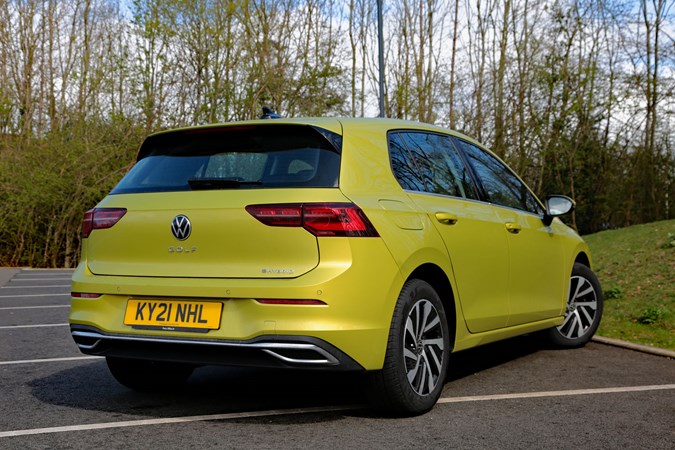
The only ‘if’ comes from the range. If you regularly cover more than 200 miles one-way in a day, or the infrastructure near you isn’t up to it, the Golf is the answer. For anyone else I’d suggest the ID.3.
Update 6: Would I recommend one?
After six months, 2,300 odd miles and lots and lots of mental maths mileage, my time with the ID.3 is up.
At the start of this long-term test I put forward the idea that the ID.3 would have to beat the Golf for me to be able to recommend it. And for me personally, I’d choose an ID.3 over a Golf. Therefore I would recommend one.
For me, as someone who has multiple street chargers within 500 metres of my flat and chargers at work, I very rarely had to make use of public infrastructure outside of my postcode. I imagine if I had access to a driveway and a charger, this would have been an even smoother process.
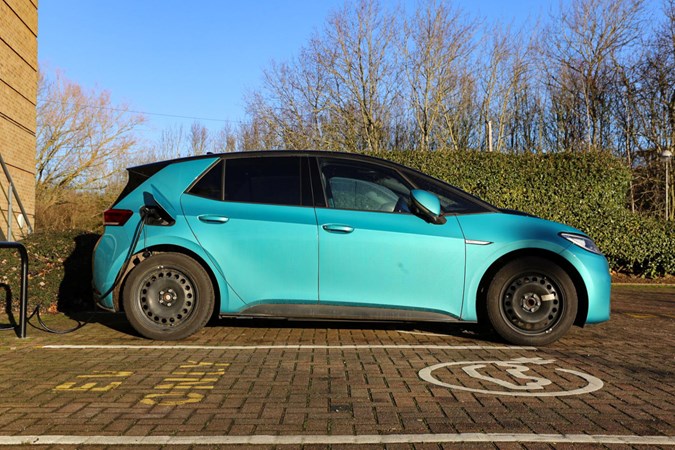
Of course, the ID.3 had its downsides. Broadly they’re all tech-based. The infotainment is a bit naff at times, especially the buttons that aren’t really buttons. And then there was the time it wouldn’t let me select the air conditioning menu. And the phone app and the car could never decide quite what the electric range was.
But over-the-air updates are forever bringing incremental improvements to the tech and the ID.3 did get less and less buggy.
The range for me is the single most important factor in an electric car. Before this test I’d have said the lowest real-world range I’d consider in an EV is 300 miles. After living with the ID.3, I’d now say it was 200.
Final thoughts
There are still a lot of questions to be answered about electric cars. How long the batteries last for, how much they’ll cost to change the battery once it does go, and of course the whole hydrogen debate. I think it’s very easy to get weighed down by this.
So I’ll offer this one piece of advice. If you can make an electric car work for you logistically, I think you should go for one. They’re relaxing (super quiet), easy to drive (they’re all automatic) and produce zero local emissions. Let the future unravel at its own rate and don’t worry about the Betamax debate.

Review contents
Practicality & safety, interior, tech & comfort, engines & handling, ownership cost, long term test currently reading.
Volkswagen ID.3 review: performance, motor & drive
The volkswagen id.3 is quiet, refined and easy to manoeuvre around town, but not the most exciting ev to drive.

- 2 Range, battery & charging
- 3 Running costs & insurance
- 4 Performance, motor & drive - currently reading
- 5 Interior, dashboard & infotainment
- 6 Boot space, seating & practicality
- 7 Reliability & safety rating
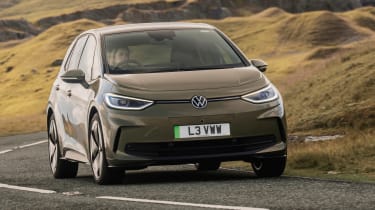
4.0 out of 5
The Volkswagen ID.3 weighs around 1,700kg, so it’s quite a lot heavier than an equivalent petrol or diesel family hatchback. Thanks to well designed suspension and powerful motors, though, it does a good job of handling that extra bulk. Over bumpy country roads, we found the ID.3 felt stiff but still quite comfortable – even on large 20-inch wheels. Around town, where the potholes are bigger and the speeds are lower, it should still be smooth enough to keep anyone happy.
Volkswagen ID.3 0-62mph, top speed and acceleration
While the Volkswagen ID.3 was once offered with two electric motor options, buyers are now limited solely to the more powerful of the pair. Mounted to the rear axle, the ID.3’s motor outputs a punchy 201bhp, propelling the electric family hatch from 0-62mph in 7.4 seconds.
Most of the ID.3’s performance can be felt at normal speeds, with the 0-30mph sprint dispatched with ease. As a result, we found the car felt eager and smooth around town, even if acceleration started to tail off as we got up to higher speeds. That’s not an issue exclusive to the ID.3 however, as it’s the nature of electric motors. They provide all their power from the off, rather than building up like combustion engines do. The top speed of all models is limited to 99mph, but that’s largely irrelevant to UK drivers.
If you’re after an electric alternative to Volkswagen’s legendary Golf GTI, the brand is set to launch a hot version of the ID.3 very soon. Called the ID.3 GTX , the electric hot hatch is expected to feature the dual-motor setup from the VW ID.4 GTX and ID.5 GTX, which produces close to 300bhp in all.
The Volkswagen ID.3 is good to drive, and a tight turning circle means it’s easy to park and move around city streets. The cabin is nice and quiet around town and on the motorway as well, with little road noise infiltrating into the cabin and that near-silent electric motor contributing to the serenity.
But the ID.3 is a car of many talents. The low centre of gravity and rear-mounted electric motor means this is a fun EV to drive. It doesn’t lean or roll excessively in the bends, and the steering is well weighted. Mated to instant acceleration, while it might not be quite as engaging as an MG4 or Cupra Born – the latter sharing many of its parts with the VW – we’re pretty convinced every ID.3 has the ingredients to put a smile on your face on a twisting country road. Plus, despite its sporty rear-driven setup, the ID.3 always feels secure and confident – even in the wet.
One thing that’s a little disappointing is the brake pedal feel, which offers quite a bit of travel before the pads bite the discs. This can be mitigated slightly by engaging B mode for the regenerative braking system, but even this isn’t as strong as we’d like and doesn’t offer the one-pedal driving capability of rivals like the Nissan Leaf .
In This Review
Richard is editor of DrivingElectric, as well as sister site Carbuyer.co.uk , and a regular contributor to Auto Express . An electric and hybrid car advocate, he spent more than five years working on the news and reviews desk at Auto Express and has driven almost every new car currently on sale.
Most Popular
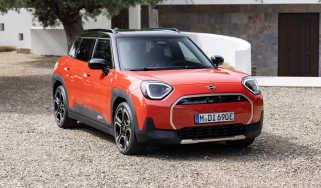
New MINI Aceman revealed in full: baby SUV aims for style and substance
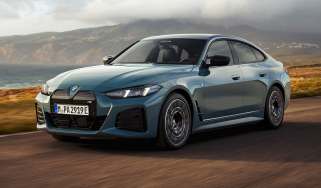
Revamped BMW i4 targets executive EV top spot
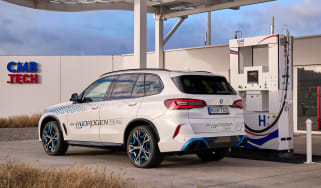
Where can I buy hydrogen and where is my nearest hydrogen filling station?
LATEST DEALS:
- Vauxhall Mokka – Save £4766
- Peugeot 3008 – Save £6062
- BMW 3 Series – Save £2830
- Audi A4 – Save £4753
Volkswagen ID 3 review
Category: Electric car
Electric family car is good to drive and the new facelifted version is a step up from the original

SPECIAL OFFER

Share review

Genesis GV60
Introduction, what car says....
The VW ID 3 might sound like a new counterpart of R2D2 and C3PO in Star Wars, but it’s actually a car, and a very important one at that. You see, it's Volkswagen’s first model based on a bespoke electric car platform.
The ID 3 replaced the VW e-Golf as its family-sized choice for those with a green conscience. It's so important that the 3 in its name represents its position as the manufacturer's third major launch of all time, after the original Beetle and the ever-popular VW Golf .
Unlike the Golf, which has various engines and trim levels to choose from, the ID 3 is available in just two different flavours. Performance doesn’t vary all that much between them, but one has a larger battery capacity so it can go further on a single charge.
Whichever version you choose, your ID 3 has something in common with the Beetle, because the 'engine' – which in this case, of course, is an electric motor – sits at the back of the car, driving the rear wheels. That, and the fact that the ID 3’s battery is below the floor for a low centre of gravity, should help its cornering prowess.

What Car? has a buying service
All that sounds promising, but this isn't the only electric family car to choose from. For a start, there's the closely related Cupra Born (a former category winner at our Car of the Year Awards ). Then there are cheaper rivals including the MG4 EV , the Nissan Leaf and the Renault Zoe plus more expensive models such as the Hyundai Kona Electric , the Kia Niro EV and the Tesla Model 3 .
To keep it competitive, the VW ID 3 has been given a mid-life facelift, which has given it revised styling and fixed (hopefully) some weak points. So, does that mean it should be the next car on your driveway? That’s what we’ll tell you in this review, as we rate it in important areas including performance, battery range, practicality and running costs.
When you’re ready to buy your next car, we could save you a bundle of cash if you search our free New Car Buying service . It's where you'll find some of the best new electric car deals .
Performance & drive
What it’s like to drive, and how quiet it is, engine, 0-60mph and gearbox.
Every VW ID 3 comes with a 150kW electric motor powering the rear wheels, and while performance is largely the same, the distance you’ll travel between charges depends on whether you go for the Pro 58kWh or the Pro S 77kWh.
With 201bhp, the Pro can sprint from 0-62mph in 7.4 seconds – quicker than the MG4 EV SE – while the heavier Pro S takes 7.9 seconds. Both feel quick enough off the line and make it easy to get up to motorway speeds without any issues. The thing is, the lower weight of the Pro means that it feels generally nippier around town.

Arguably more importantly, the Pro can travel up to 265 miles between charges, which is further than the Leaf and the Zoe but not as far as the Renault Megane E-Tech . Meanwhile, the Pro S has a longer range of 347 miles. That's further than any Niro EV and the entry-level Model 3, but not as far as the MG4 Extended Range.
Suspension and ride comfort
A heavy battery requires a stiff suspension set-up to support it, so don’t expect the ID 3 to offer Golf levels of ride comfort. The lighter Pro version is far from harsh, though, and manages to take most of the sting out of imperfections at speed. It only really gets a bit fidgety around town, especially over potholes.
The Pro S model is heavier and you can feel that as you drive along. Again, it's not uncomfortable, but it moves you around in your seat more than the Pro and gives a more pronounced thud as you drive over potholes. The firmness does mean it never feels floaty over undulations though.
You can add adaptive suspension to either version by ticking the Exterior Pack Plus option box, and that allows you to soften or stiffen the suspension through the driving modes. While it makes it feel noticeably firmer or softer, it doesn't really affect comfort. The softer Niro EV is comfier.

With its light steering and excellent turning circle (10.2m – about the same as in the VW Up ), manoeuvring the ID 3 around town is a breeze. Beyond the urban sprawl, the steering is accurate and sensibly geared, but it doesn't give much finger-tingling communication or weight build-up when cornering in the default Comfort driving mode. Sport mode adds a bit of useful extra heft to the steering.
Grip is decent, and for an everyday electric car designed to get you from A to B with little drama, the ID 3 handles very well indeed. There's more driver engagement than you’ll find in the Kona Electric and the Zoe.
It will twitch at the rear if you back off the accelerator abruptly mid corner or apply a bit too much power on the way out of a tight, damp bend, but a lighter non-electric hatchback – the Seat Leon for example – is far more entertaining to drive.
Noise and vibration
Even by electric car standards, the ID 3's motor and gearbox are ultra-mute, which is amazing around town but does mean you can hear everything else that's going on at speed. It generates a smattering of suspension and road noise, but loud wind noise – much of it whistling through the climate control vents – is the most noticeable breach of the peace.
The car stops smoothly enough when you’re driving carefully, which is always good. That's not something every electric car can do, because some regenerative braking systems are better than others (the Zoe, for example, has quite a snatchy brake pedal). You can turn up the regen effect up enough that the car slows down to a near stop when you lift off the accelerator, but there's no one-pedal driving setting, as there is on the Leaf and the Model 3.
The ID 3's brake pedal does have a very long travel, making emergency stops a bit unnerving. The Kona Electric is much better in that respect.
Driving overview
Strengths Very quiet as you drive along; quite fun to drive through corners; accurate steering
Weaknesses Brake pedal can be quite unnerving; 77kWh version feels heavy
The interior layout, fit and finish
Driving position and dashboard.
The interior of the VW ID 3 has a futuristic feel without being so revolutionary that it’ll scare anyone with an acute fear of change. It's a spartan affair, with little more than a small but clear 5.3in display behind the steering wheel, which shows the speed, range and sat-nav instructions, and a rotary-style gear selector on the side.
In terms of layout, the position of the driver’s seat in relation to the steering wheel and pedals is very good, leaving you sitting relaxed at the wheel. Height and reach adjustment for the wheel is standard. If you want front seats with adjustable lumbar support, you’ll need to splash out on the range-topping Pro S trim or add the optional Interior Comfort Pack though.
We will grumble at the lack of 'real' buttons (a problem in the related Born too) – all the controls are touch-sensitive. Worst of all, the temperature controls below the infotainment screen are not backlit, making them impossible to see at night ( Volkswagen says lit ones will be introduced in 2024). Everything else is operated from the infotainment touchscreen. Proper physical buttons and knobs – as found in rival electric cars including the Niro EV, the Leaf and the Zoe – are so much easier to use.
Visibility, parking sensors and cameras
Seeing out of the front of the ID 3 is pretty easy overall, and its deep windscreen and slim front pillars afford you a largely unobstructed view of the road ahead. They're heavily angled though, so despite the large glass cut-out to reduce the size of your front blind-spot, taller individuals might find that they get in the way a little at T-junctions.
The rear pillars are thicker and the rear screen a little shallow, making it a bit harder to see what’s over your shoulder or out of the back. To make parking easier, front and rear parking sensors are fitted as standard. If you want a rear-view camera, you have to add it as an option.
For increased visibility at night, you get full LED headlights with high-beam assist, and you can add matrix LED headlights as an option. The matrix versions can be left on full beam at all times without dazzling oncoming drivers.

Sat nav and infotainment
All ID 3s come with a 10.0in infotainment touchscreen, which is a similar size to many of its rivals, but quite a bit smaller than the 15.0in display in the Model 3. What’s more, the infotainment software is nothing like as slick as that rival’s.
It looks good, but it’s all style over substance, proving laggy and confusingly lay out – the system in the Niro EV is far more straightforward. Next year, to hopefully fix the issues, VW is introducing a new infotainment system to the ID 3, which includes a larger 12.9in touchscreen and new software.
Until then, all models get a natural-speech voice control to call out commands to, but it's hit and miss whether it’ll do what you ask especially if you have noisy children in the car. Sat-nav is standard across the range, along with Android Auto and Apple CarPlay smartphone mirroring. Handily, that means you can bypass many of the infotainment system’s confusing menus.
Quality was once a VW byword, but in the past the ID 3 made it seem that it had taken a back seat in the company’s priorities. Fortunately, its 2023 mid-life facelift has improved on the original car, adding soft materials to pretty much every surface you’ll touch often.
Still, it doesn’t take much prodding around to find lots of materials that feel a bit cheap. The biggest culprit is the centre console, which is obviously made from cheap scratchy plastics.
That’s disappointing when you consider that even the entry-level Pro version costs almost as much as the entry-level BMW 3 Series . Now, don’t get us wrong, the Tesla Model 3 isn’t exactly great when it comes to material and build quality, but it is better than the ID 3.
Interior overview
Strengths Good forward visibility; fundamentally sound driving position
Weaknesses Laggy and confusing infotainment system; disappointing material quality; fiddly touch-sensitive buttons
Passenger & boot space
How it copes with people and clutter, front space.
There’s more than enough space in the front of the VW ID 3. If you’re six feet tall, or even a bit taller, you should have enough head and leg room.
There’s pretty good storage space available. A large chunk of that is in the centre console, which has various cubbies and cup-holders. The glovebox is a decent size, as are the door bins.
The ID 3 is roughly the same length as the Golf and is about as roomy as the Golf in the back. There’s space for taller passengers to sit behind anyone equally tall without feeling squished, but there's not a lot of head or leg room going spare. For some context, the Kia Soul EV and the Model 3 are both roomier
Those in the middle seat get the rawest deal of the lot. Even those measuring just under six feet tall will find that the raised middle seat robs them of all head room. With three adults in the back, there won’t be much shoulder room to spare, but at least there’s a totally flat floor with no central tunnel. If you opt for the Pro S model with the 77kWh battery, you're actively discouraged from carrying three in the back, because there are only two rear seats.
Storage amenities in the rear are pretty sparse, with rear-seat occupants given smallish door bins to play with and nothing else.

Seat folding and flexibility
There’s not a huge amount to report here. You get 60/40-split rear seats as standard, which are not as useful as 40/20/40 seats, but the addition of a ski hatch does give you more options for carrying longer loads with passengers.
There's no option of sliding or reclining rear seats, which you can get in a family SUV of an equivalent price.
The ID 3 has a 385-litre boot, which is five litres bigger than the Golf’s, and is fine for fitting in a buggy, the weekly shopping or a couple of suitcases. The Leaf's boot is bigger and the Model 3’s is in a different league for cargo capacity.
The boot is a usefully square shape, making packing easier.
We’d suggest adding the optional height-adjustable boot floor, because it doesn’t cost very much but reduces the load lip and gives you a flat floor if the rear seats are folded. Better still, it provides somewhere to stow the charging cables without encroaching on boot space.
Practicality overview
Strengths Loads of boot space; lots of front head and leg room
Weaknesses Pro S only has four seats; rear head room is tight, especially in the middle
Buying & owning
Everyday costs, plus how reliable and safe it is, costs, insurance groups, mpg and co2.
As a cash purchase, the cheapest VW ID 3 Pro will set you back about the same as the entry-level Niro EV and the top-spec MG4 EV Trophy Extended Range, but more than the Leaf and the Zoe. Meanwhile, the more expensive ID 3 Pro S costs almost as much as the Model 3.
As a company car , the ID 3 will save you a heap of cash over a petrol or diesel because electric car benefit-in-kind (BIK) tax is very low. The ID 3 should look after private buyers too, thanks to very slow predicted depreciation (strong resale values mean competitive PCP finance rates).
The ID 3 Pro can fast charge at up to 120kW and the Pro S 170kW. As a result, the Pro should charge from 5-80% in around 35 mins, while the faster charging Pro S should do the same charge in around 30 mins. On an 11kW public charger , the Pro will go from 0-100% in 6hr 15mins, while the Pro S will take 7hr 30mins. The Model 3 can charge even faster, and the Tesla Supercharger network is the best at the moment in terms of reliability and proliferation.
Equipment, options and extras
No matter which of the ID 3 versions you go for, you get plenty of standard kit to help justify the price tag. The entry-level Pro has 18in alloy wheels, wireless phone-charging, electrically heated and folding side mirrors, heated windscreen washer jets, heated front seats, a heated steering wheel, adaptive cruise control and dual-zone air conditioning.
Upgrading to the Pro S trim gets you the 77kWh battery, 19in alloy wheels and upgraded leatherette seats with electric adjustment.
If you want more kit, there are plenty of options packs you can add, including the Exterior Pack Plus and a heat pump that makes heating the interior more efficient.

Reliability
The ID 3 had a middling performance in the 2022 What Car? Reliability Survey and finished below the MG ZS EV and the Model 3.
As a brand, Volkswagen came 22nd out of 32 manufacturers ranked in the survey. That was below Hyundai, Kia, MG and Tesla, but above Nissan and Peugeot.
VW gives you a three years/60,000 miles warranty. That’s fairly average in the class, but doesn’t come close to Kia's seven-year cover. The ID 3's battery is guaranteed to maintain at least 70% of its energy capacity for eight years and 100,000 miles.
Safety and security
There's an extensive suite of safety kit fitted as standard, including automatic emergency braking ( AEB ) with pedestrian and cyclist monitoring, lane-keeping assistance, adaptive cruise control, a driver fatigue monitor and traffic-sign recognition, which shows the speed limit on the driver display.
The ID 3 scored the full five stars when it was tested by the safety experts at Euro NCAP in 2020. The Niro EV with a safety pack scored five stars, but that was in 2022 when the tests were tougher, so it’s impossible to directly compare. Likewise, the Model 3 holds five stars, but they date back to 2019.
For all the latest reviews, advice and new car deals, sign up to the What Car? newsletter here
Costs overview
Strengths Lots of standard equipment; loads of safety kit; competitive resale values
Weaknesses Pro S version is expensive; reliability could be better; average warranty
The official range of the entry-level Pro, which has a 58kWh battery, is 265 miles. For the Pro S, with its larger 77kWh battery, it's 347 miles.
No. While the ID 3 electric car is similar to the VW Golf in many ways, including size, it doesn’t replace it, and they are sold side by side. From 2014 to 2020, Volkswagen sold an electric version of the Golf, called the VW e-Golf .
If you go for the entry-level ID 3 Pro, you can expect to pay about the same as the Kia Niro EV or the top-spec MG4 EV Trophy Extended Range. If you want the Pro S, with its 77kWh battery, you can expect to pay almost as much as the Tesla Model 3 .
If you're using an 11kW home charger the Pro version should take about six hours and 15 minutes to charge up fully, while the Pro S (which has a bigger battery capacity) should take about seven and a half hours. A three-pin wall plug will take more than 30 hours.
Explore more of the Volkswagen ID 3
- Full review Currently reading
- Versions & specs
- View our offers

Best electric cars: our top 10 revealed

New Volkswagen ID 3 vs used Tesla Model 3: verdict

New Volkswagen ID 3 vs used Tesla Model 3: costs

New Volkswagen ID 3 vs used Tesla Model 3: interiors

Volkswagen ID 3 long-term test: report 8

Volkswagen ID 3 long-term test: report 7
More volkswagen id.3, used reviews.
Used Volkswagen ID 3 2020-present
Also consider

Abarth 500e
The Abarth 500e is entertaining, but can't match the sharpness...

KGM Torres EVX
The Torres EVX is spacious and well-equipped but similarly pri...


Nissan Ariya
Electric SUV is practical, well-equipped and the 87k...

Great to look at and to drive, but a high price and meagre ran...
All Electric car reviews
Quick search.
- All car reviews
- All new car deals
- Used cars for sale
- All used makes
- Vans and commercial vehicles
- New car awards
- Used car awards
- Classic & Sports Car
- Move Electric
Tools & services
- Car finance
- Car warranty
- Gap insurance
- Sell your car
- Car Leasing
- Car Valuation
- Company car tax calculator
- Van tax calculator
- Terms & conditions
- Cookie policy
- Privacy policy
Information
- About What Car?
- Contact What Car?
- Subscribe to our newsletter
- Subscribe to What Car? magazine

What Car? is part of Haymarket Automotive , a division of Haymarket Media Group © Haymarket Media Group 2024

When you purchase through links on our site, we may earn an affiliate commission. Here’s how it works
Home / Reviews / Cars & bikes / Electric cars / Volkswagen ID 3 review: refreshed in most of the right places
Volkswagen ID 3 review: refreshed in most of the right places
Updated EV hatchback looks slicker and still goes the distance
Stuff Verdict
As well-rounded as electric hatchbacks get, the ID 3 is comfortable and has excellent range in top-spec trim. Some infotainment irks remain, though.
Sprightly performance and plenty of range
Expansive, well-appointed cabin
Charging speeds faster than ever
Infotainment still bettered by rivals
Expensive versus the competition
Introduction
First there was the Beetle. Then came the Golf. The ID 3 was supposed to be Volkswagen’s third era family hatchback, one that would catapult the brand into the electric age. Only software gremlins and an increasingly strong set of rivals meant it hasn’t been the success its maker was perhaps hoping for.
In order to better defend against surprise hits such as the MG4 EV and BYD Dolphin , VW has overhauled its mainstream EV with subtle but welcome upgrades where they matter most. Styling has been tweaked, interior materials changed, and the infotainment system triaged.
Battery, range and performance largely stays the same, meaning the ID 3 Pro S tested here is still the pick of the bunch: it’ll do almost 350 miles on a charge, is nippy enough for a family car, and has plenty of interior space. But with prices climbing ever higher, is there enough here to bring shoppers back into the fold?
The styling: made with purpose
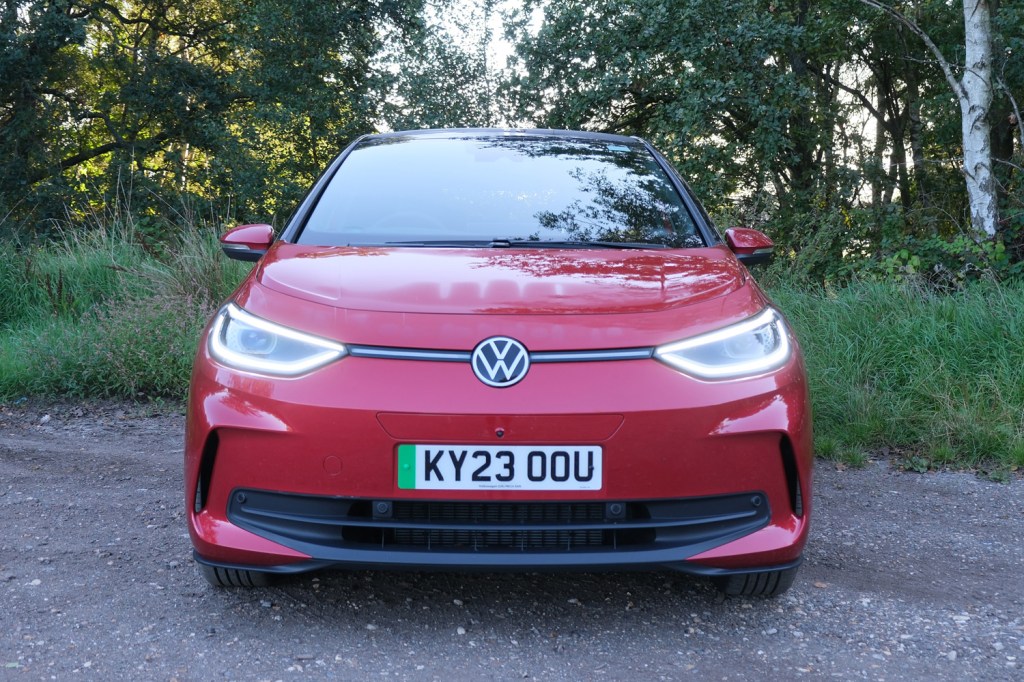
The ID 3 was a striking thing when it first went on sale, evolving the family car concept embodied by the Golf with taller proportions and shorter overhangs. The abundance of black trim wasn’t to all tastes, though – and neither was the busy front end an unkind person would say was styled like a grinning clown.
Both points have been addressed for the refresh, which adds a more traditional, colour-matched bonnet and a more purposeful front bumper. There are also a handful of new paint choices to set it further apart from the pre-facelift model. It looks a lot sharper as a result, especially in the Kings Red metallic paint and contrasting black roof seen here.
LED lights, an optional illuminated front grille and a subtle boot spoiler complete the look, though if it were us ticking the options boxes we’re not sure the aero-style wheels would make the cut. The 19in alloys it rides on by default are easier on the eye.
Things have been upgraded inside too, with more soft-touch materials on the surfaces in close reach of driver and passenger. It looks the part, but there are still plenty of scratchy plastics elsewhere. That wouldn’t surprise on a family car a decade or two ago, but irks today when you’re spending £50,000 or more on one.
This is still a very practical family car, with wide rear doors, plenty of legroom and 385 litres of seats-up boot space for comfortably swallowing a pushchair or the weekly family food shop. Just keep in mind the Pro S only has two rear seats, rather than the three you’ll get in versions with the smaller battery.
The drive: adept all ’round

The ID 3’s lounge-like front seats don’t exactly pin you in place, and with reasonably stiff suspension needed to support the hefty battery, there’s a fair bit of jostling on rougher roads. You couldn’t call it uncomfortable, though, and on smoother surfaces it feels very well composed.
Light steering and a super-tight turning circle make this a car that’s very happy in towns and cities. Even on its highest setting the regenerative braking still can’t quite pull off one-pedal driving, but it’s sufficiently smooth when slowing you down.
There’s not an awful lot of driver feedback, but it grips well in most conditions and turns in with a good deal of precision. You can feel its weight through corners, and there’s not quite the fun factor of a petrol hatchback, but there’s more entertainment to be had here than crossover EVs including the DS 3.
VW reckons the 77kW battery inside the ID 3 Pro S is good for 347 miles between charges. We didn’t see quite that much in real-world driving, but in the summer months it should manage about 300 miles in a single journey. The optional heat pump will hopefully keep that figure fairly high in the winter, too, though we didn’t get the chance to test it. Even at motorway speeds, the range estimate was always on the money. The Pro S also gets faster 170kW charging, up from 120kW in the base car. That’s handy if you’re regularly driving long distances via a rapid charger, but not so much quicker you won’t have time to buy a coffee and take a toilet break.
You pay a weight penalty for the bigger battery, but it never felt slow under foot, with 201bhp proving more than sufficient for getting the near-two tonne car up to speed. We’re not talking hot hatch performance any more, but a 60mph sprint that just dips under eight seconds is still sprightly for a family runabout. If you want more power, there’s likely to be an ID 3 GTX variant arriving at some point in the future – or there’s the 429bhp MG4 EV XPower in the meantime.
The technology: finally faster
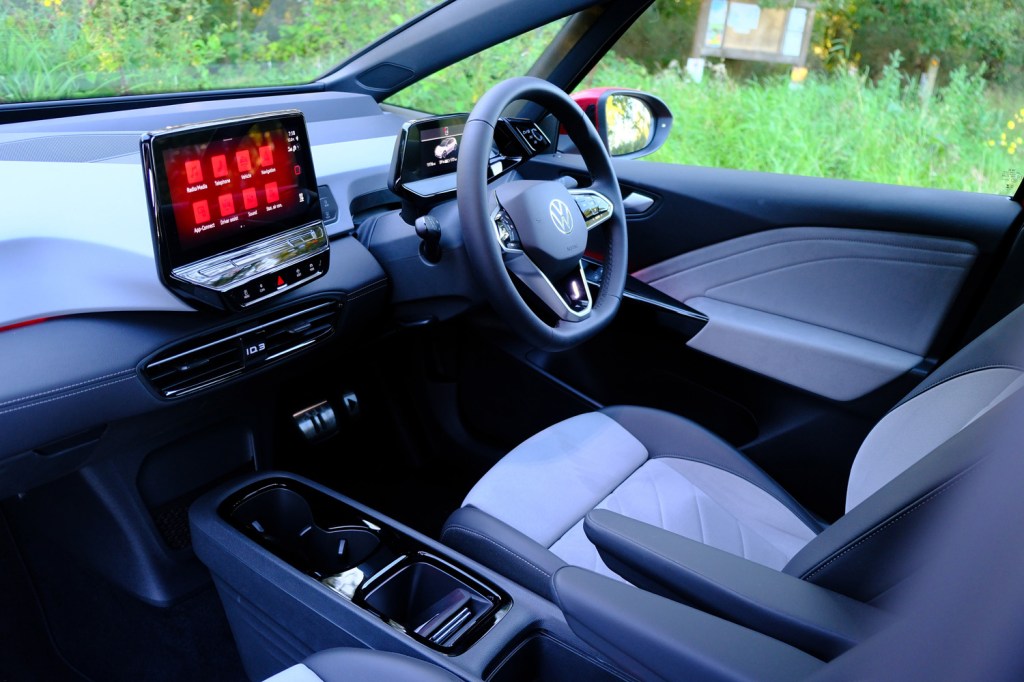
The biggest black mark on the outgoing car’s record was its sluggish, crash-prone infotainment system. Volkswagen has addressed that for the facelifted ID 3, with new software and faster internals that makes the interface a lot more responsive to your various taps and prods. UK cars stick with a 10in touchscreen, rather than the larger 12in one now offered on left-hand drive models, but it still looks plenty sharp and detailed. The UI is easy enough to get around, and plays nicely with both Android Auto and Apple CarPlay.
We’d say it was worth sticking with the on-board navigation purely for the optional augmented reality heads up display, which shows driving instructions in real-time; huge arrows appear in your line of vision as you approach junctions and driver alert warnings are impossible to miss. It’s the first time this sort of tech has filtered down from more high-end models, and is the biggest part of the £770 Interior Pack, which also adds colour-changing ambient lighting and a sound-insulating windscreen.
The instrument cluster sticks with the same compact, 5.3in digital display as before, displaying nothing but the essentials. It’s easy to read at a glance and was never obscured by the steering wheel, which is a common complaint with Peugeot’s i-cockpit dashboard .
Frustratingly, illuminated volume and temperature sliders still don’t make the grade. Adjusting either while driving at night is still a literal stab in the dark, and it’ll apparently be 2024 before that finally changes. Most settings are still controlled through the touchscreen, which is less convenient than physical knobs and dials in our book.
Volkswagen ID 3 verdict
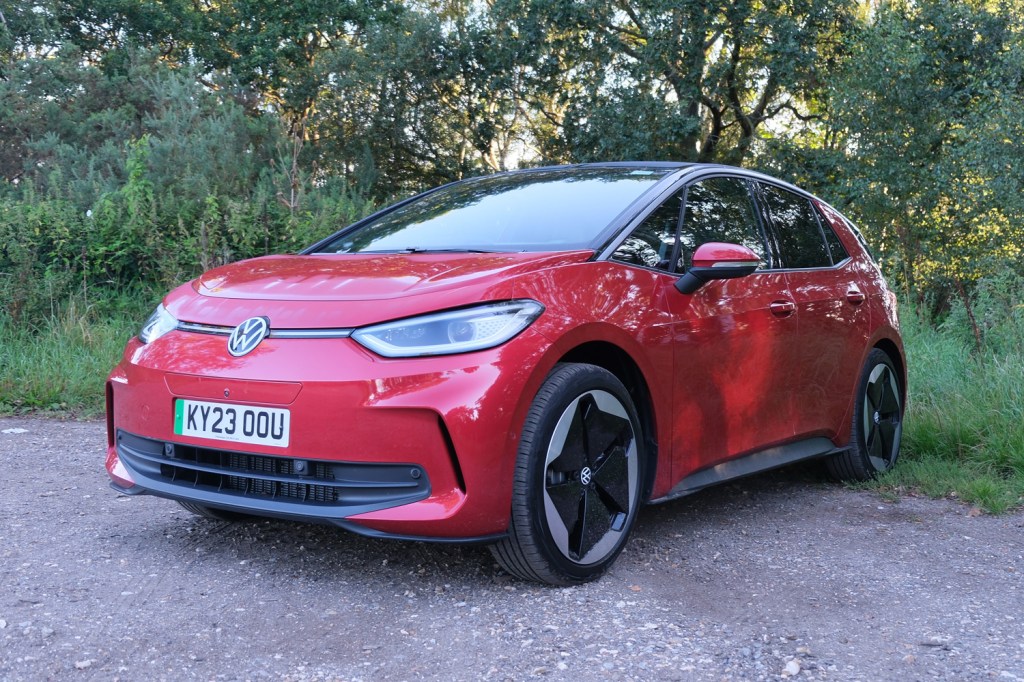
VW would maybe say otherwise, but it always felt the ID 3 was meant to replace the Golf as the defining family hatchback – yet the original version didn’t quite nail it. This refreshed model gets a lot closer, thanks to its streamlined looks and improved interior. The top-spec ID 3 Pro S has just the right amount of pep for spirited-yet-legal driving, doesn’t skimp on range, and can still entertain on the right road in ways electric crossovers and SUVs can’t quite match.
The infotainment upgrades arguably don’t quite go far enough to make this a slam-dunk, though, even with some welcome OTA upgrades and a more responsive interface. You can’t really consider it a “car of the people” when it’ll set you back north of £51,000 after options, either. That puts it at a premium compared to the current crop of electric family cars, which are quickly catching up on range, ride comfort and in-car tech.
Even so, we can’t ignore the badge appeal Volkswagen rightly carries. If you care what you’re seen behind the wheel of, there’s plenty here to keep you happy.
Stuff Says…
Score: 4 /5
VW ID 3 Pro S technical specifications

A tech addict from about the age of three (seriously, he's got the VHS tapes to prove it), Tom's been writing about gadgets, games and everything in between for the past decade, with a slight diversion into the world of automotive in between. As Deputy Editor, Tom keeps the website ticking along, jam-packed with the hottest gadget news and reviews. When he's not on the road attending launch events, you can usually find him scouring the web for the latest news, to feed Stuff readers' insatiable appetite for tech.
Areas of expertise
Smartphones/tablets/computing, cameras, home cinema, automotive, virtual reality, gaming
Share this:
Related content, best smartwatch 2024: apple and android smartwatches reviewed.
Our pick of the best smartwatches around, based on extensive in-depth reviews

Best soundbar 2024: TV sound for every budget reviewed
Upgrade your substandard TV speakers with superior sound and Dolby Atmos: we’ve tested the best soundbar for every home setup

Best smartphone 2024: Apple and Android phones reviewed
The best phones you can buy right now – all reviewed and rated

Volkswagen’s new electric Golf is in the works – What that means for the ID.3
Development of Volkswagen’s new fully electric Golf is underway, but what does that mean for the ID.3? VW’s chief tech officer, Kai Grunitz, says there could be some overlap between the two EVs.
Volkswagen’s electric Golf may overlap with the ID.3
Volkswagen is celebrating the Golf’s 50th anniversary this year after the first model rolled off the assembly line in March 1974.
Since then, VW has sold over 37 million Golfs across eight generations globally. Grunitz confirmed to Top Gear that this will be the gas-powered Golf. The next generation will be all-electric, likely rolling out in 2028.
What does that mean for the ID.3? The all-electric hatch designed to replace the e-Golf, may be replaced itself by Volkswagen’s next-gen electric Golf.
“There is not enough space to have two or three different models fitting to the same customer,” Grunitz explained. “We’ve started to work on a fully electric Golf,” he said, but “There will be an overlap” with the ID.3 .
Grunitz claimed the Golf is “the heart of our brand,” saying VW won’t kill off the name. The electric Golf will be a “real Golf,” according to Grunitz. “It has to look like a Golf. It has to be affordable like a Golf. It has to be [capable] like a Golf.” He also confirmed that “there has to be a GTI.”

The new all-electric Golf won’t be based on the MEB platform that underpins the ID.3. Instead, Grunitz said it will be built on its next-gen SSP platform.
He explained, “The idea is to have the same electric architecture.” SSP will be a shared EV platform for the whole group.

Electrek’s Take
Top comment by michael e.
Why don’t they go back to using the “e-Golf” name? I’m not sure “I.D.” has a lot of brand identity for the average car buyer and from what I heard the e-Golf was pretty popular in Britain. Also the name is self-explanatory.
Does the electric Golf mean Volkswagen is swaying from its ID naming system? A report from Germany’s Handelsblatt last year claimed VW was building an electric SUV similar in size and style to the Tiguan.
It’s expected to enter production at its Wolfsburg plant in 2026 and could go by the name ID.Tiguan. Does that mean the new electric Golf will be the ID.Golf?
At the LA Auto Show last year, Thomas Shafer, CEO of VW Passenger Cars, said , “We have iconic brand names, Golf and GTI. It would be crazy to let them die and slip away.”
He did confirm, “We will stick with the ID logic,” but Shafer added, “Iconic models will carry a name.”
FTC: We use income earning auto affiliate links. More.

Peter Johnson is covering the auto industry’s step-by-step transformation to electric vehicles. He is an experienced investor, financial writer, and EV enthusiast. His enthusiasm for electric vehicles, primarily Tesla, is a significant reason he pursued a career in investments. If he isn’t telling you about his latest 10K findings, you can find him enjoying the outdoors or exercising
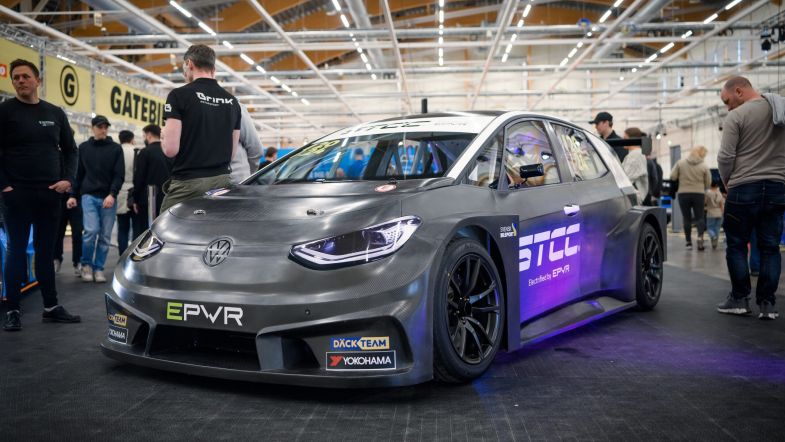
STCC unveils new Volkswagen ID.3 for 2024 season
By TouringCarTimes
The STCC organisation unveiled the first completed Volkswagen ID.3 for the first all-electric season of the championship during the Custom Motor Show in Jönköping, Sweden.
“We have now revealed all four electric models ahead of the 2024 STCC season, where the Volkswagen ID.3 joins the Tesla Model 3, CUPRA Born and BMW i4 in a strong and relevant starting field with the latest electric models,” said Micke Bern, CEO of STCC.
“Volkswagen models have competed successfully in the STCC over the years with a total of three driver’s titles and 38 race victories. The ID.3 is also one of the world’s best-selling electric car models and it will be a lot of fun to see it on our Swedish tracks during this year’s season.”
Three Volkswagens are being built by EPWR for the 2024 season while the team which will run the cars and its drivers are yet to be revealed.
Brink Motorsport has confirmed three Teslas, PWR Racing three CUPRA Borns and Exion Racing three BMW i4s.
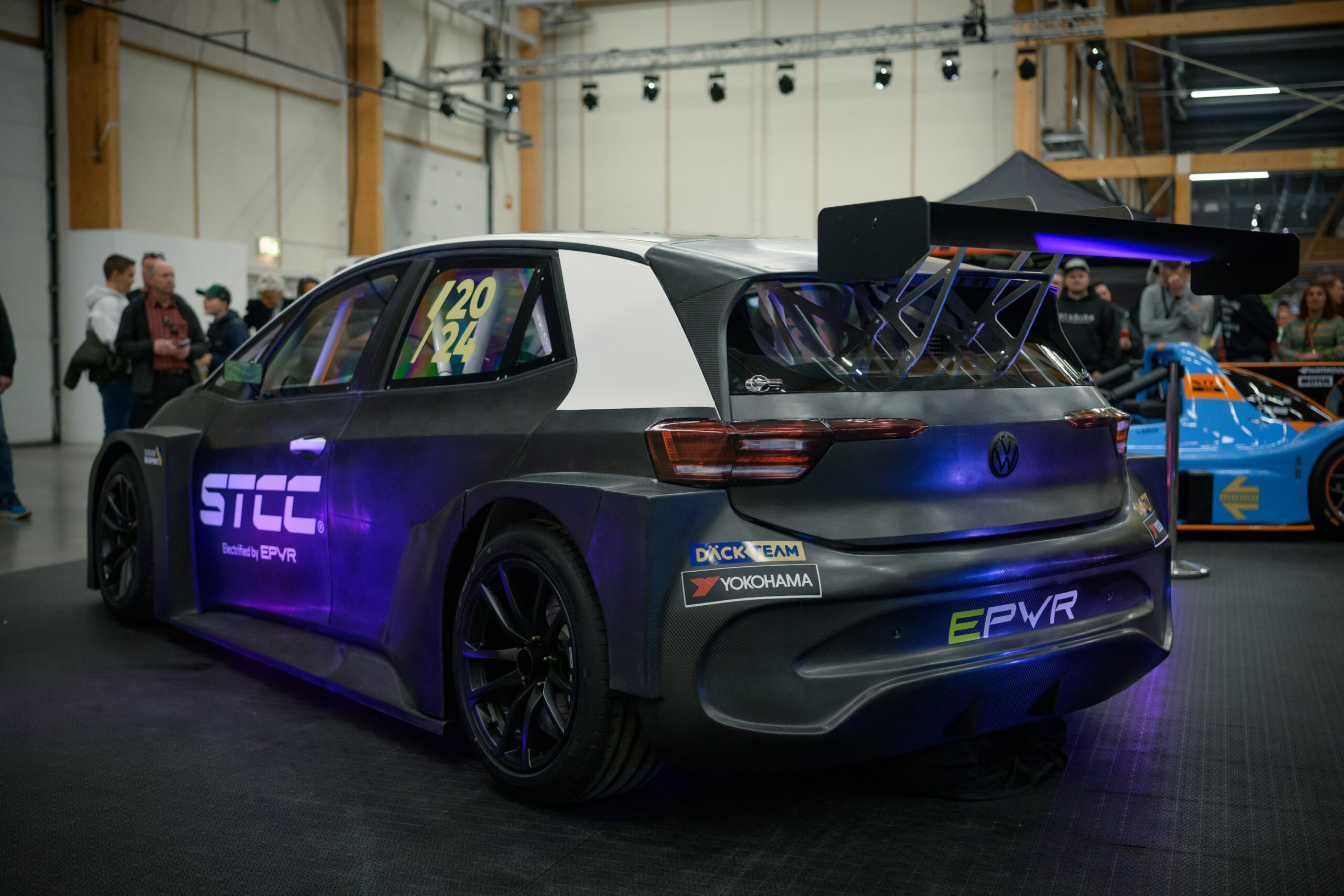
Recent STCC news
Electric era moves closer as stcc cars delivered, cupra sweden-pwr confirms dahlgren and bengtsson for 2024 stcc season.

STCC reveals new production images as electric era draws closer
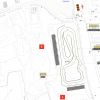
STCC unveils new Head 2 Head circuit for Gothenburg premiere

Third STCC model revealed as covers come off BMW i4
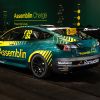
Brink Motorsport unveils 2024 Tesla livery

STCC reveals 2024 calendar for delayed electric debut

New CUPRA Born unveiled at Mantorp for electrified 2024 STCC season
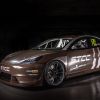
First electric STCC car revealed – Tesla Model 3

STCC delays electric debut to 2024

Emma Kimiläinen makes touring car return with Exion Racing deal
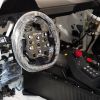
STCC issues first teaser image from production of new electric touring cars
- No posts found
- What's My Car Worth?
- Buyer's Guide
2024 Volkswagen Taos
Starting at .css-1ykuyyb{font-size:1.125rem;line-height:1.2;margin-left:0.25rem;}@media(min-width: 40.625rem){.css-1ykuyyb{color:#000000;}} $25,420.

Select a year
- Lows Drab interior design, mediocre acceleration, not quite as athletic as the Golf.
- Verdict Despite its small stature, the Taos impresses with enough interior space to underscore its practical mission.
Where This Vehicle Ranks

Chevrolet Trax
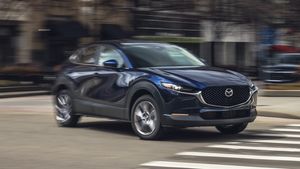
Mazda CX-30
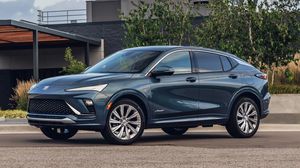
Buick Envista
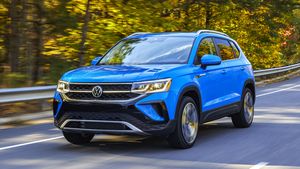
Volkswagen Taos
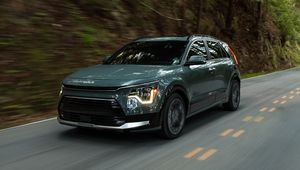
Kia Niro Hybrid
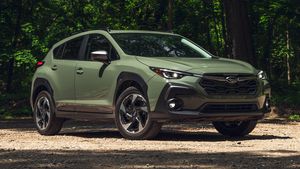
Subaru Crosstrek
What's new for 2024.
A new SE Black trim joins the lineup and wears a darkened exterior appearance, including a black roof, black wheels, and black trim accents. The interior of the SE Black, however, receives blue stitching on its upholstery. The rest of the lineup sees a few minor changes. The base S trim now includes VW's IQ.Drive adaptive cruise control system with lane centering, the SE gains dual-zone automatic climate control, and the SEL sees a few cosmetic tweaks.
Pricing and Which One to Buy
The price of the 2024 Volkswagen Taos starts at $25,420 and goes up to $34,940 depending on the trim and options.
We recommend the mid-level SE model because it provides the best value. It comes standard with 18-inch wheels, blind-spot monitoring, heated front seats, remote start, and wireless charging. We'd add all-wheel drive for an extra $1450, largely because it replaces the front-drive model's rear suspension with a more sophisticated independent unit.
Engine, Transmission, and Performance
The Taos is powered by VW's new turbocharged 1.5-liter four-cylinder engine. It makes 158 horsepower and 184 pound-feet of torque. Front-drive versions feature an eight-speed automatic transmission, and all-wheel-drive models have a seven-speed dual-clutch automatic. The front-drive and all-wheel-drive Taos also have different rear suspensions, with the former using a torsion-beam setup and the latter using a more sophisticated multilink design. During our testing, the acceleration difference between the two different drivetrains was negligible, with the front-wheel-drive Taos beating the 4Motion to 60 mph by only a tenth of a second. A set of 17-inch wheels are standard, but 18- and 19-inchers are also available. We appreciated the engine's low-speed thrust, the eight-speed automatic's unobtrusive operation, and the suspension's composure on even roads during our time with one .

Fuel Economy and Real-World MPG
The front-drive Taos is rated at 28 mpg in the city and 36 mpg on the highway, and the all-wheel-drive model is rated at 25 mpg city and 32 highway. On our 75-mph highway fuel-economy route, the front-wheel-drive Taos earned an impressive 40 mpg, while the 4Motion all-wheel-drive Taos achieved 33 mpg. For more information about the Taos's fuel economy, visit the EPA's website .
Interior, Comfort, and Cargo
Inside, there's nothing overtly special about the Taos. The design and materials mimic the modern aesthetic found on other VW models. A fully digital gauge cluster is fitted to every dashboard and the standard two-tone seats are covered in cloth. However, leatherette and leather upholstery are both available, too. There's no shortage of popular options, either. The Taos cabin can be equipped with customizable ambient lighting, an eight-way power driver's seat, dual-zone climate control, a heated steering wheel, heated and ventilated front seats, and a panoramic sunroof. The Taos boasts 37.9 inches of rear-seat legroom, which is only 0.8 inches less than the two-row Tiguan. The Taos also has 28 cubic feet of cargo space behind the rear seatbacks and 66 cubes with them folded flat.
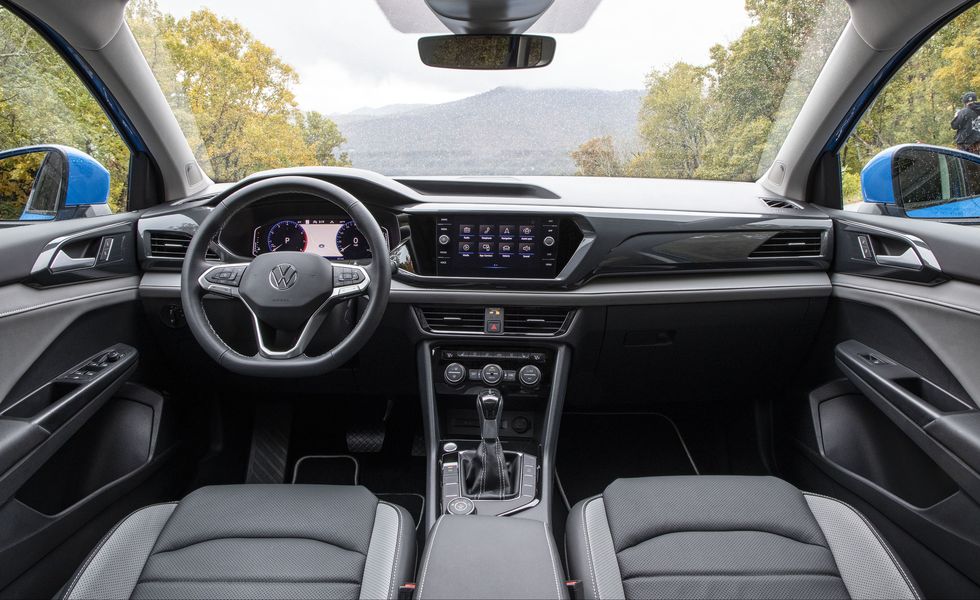
Infotainment and Connectivity
Every Taos features a slick-looking infotainment system with a subscription-based Wi-Fi hotspot. A 6.5-inch touchscreen is standard, and an 8.0-inch version is optional. The system can also be equipped with built-in navigation, an eight-speaker BeatsAudio stereo, SiriusXM satellite radio, and wireless smartphone charging.
Safety and Driver-Assistance Features
Overall safety rating (nhtsa).
The smallest VW crossover is available with a variety of driver-assistance technology , too, including forward-collision warning and automated emergency braking. For more information about the Taos's crash-test results, visit the National Highway Traffic Safety Administration ( NHTSA ) and Insurance Institute for Highway Safety ( IIHS ) websites. Key safety features include:
- Standard blind-spot monitoring and rear cross-traffic alert
- Standard forward collision warning and automatic emergency braking
- Standard adaptive cruise control with a lane-centering feature
Warranty and Maintenance Coverage
Volkswagen provides an above-average limited warranty and below-average powertrain coverage. However, the company does include complimentary scheduled maintenance that aligns with Toyota .
- Limited warranty covers four years or 50,000 miles
- Powertrain warranty covers four years or 50,000 miles
- Complimentary scheduled maintenance is covered for two years or 20,000 miles
Specifications
2022 Volkswagen Taos SEL Vehicle Type: front-engine, front-wheel-drive, 5-passenger, 4-door wagon
PRICE Base/As Tested: $33,385/$33,385
ENGINE turbocharged and intercooled DOHC 16-valve inline-4, aluminum block and head, direct fuel injection Displacement: 91 in 3 , 1498 cm 3 Power: 158 hp @ 5500 rpm Torque: 184 lb-ft @ 1750 rpm
TRANSMISSION 8-speed automatic
CHASSIS Suspension, F/R: struts/torsion beam Brakes, F/R: 12.3-in vented disc/10.7-in disc Tires: Bridgestone Turanza LS100 215/50R-18 92H M+S
DIMENSIONS Wheelbase: 105.9 in Length: 175.8 in Width: 72.5 in Height: 64.4 in Passenger Volume: 99 ft 3 Cargo Volume: 28 ft 3 Curb Weight: 3244 lb
C/D TEST RESULTS 60 mph: 7.4 sec 1/4-Mile: 15.8 sec @ 87 mph 100 mph: 21.5 sec Results above omit 1-ft rollout of 0.3 sec. Rolling Start, 5–60 mph: 8.4 sec Top Gear, 30–50 mph: 4.5 sec Top Gear, 50–70 mph: 6.1 sec Top Speed ( C/D est): 125 mph Braking, 70–0 mph: 176 ft Roadholding, 300-ft Skidpad: 0.83 g
C/D FUEL ECONOMY Observed: 30 mpg 75-mph Highway Driving: 40 mpg 75-mph Highway Range: 520 mi
EPA FUEL ECONOMY Combined/City/Highway: 31/28/36 mpg
2022 Volkswagen Taos SEL 4Motion Vehicle Type: front-engine, all-wheel-drive, 5-passenger, 4-door wagon
PRICE Base/As Tested: $34,940/$36,535 Options: panoramic sunroof, $1200; Kings Red Metallic paint, $395
TRANSMISSION 7-speed dual-clutch automatic
CHASSIS Suspension, F/R: struts/multilink Brakes, F/R: 12.3-in vented disc/10.7-in disc Tires: Pirelli Scorpion Zero All Season 225/45R-19 92H M+S
DIMENSIONS Wheelbase: 105.6 in Length: 175.8 in Width: 72.5 in Height: 64.6 in Passenger Volume: 99 ft 3 Cargo Volume: 25 ft 3 Curb Weight: 3557 lb
C/D TEST RESULTS 60 mph: 7.5 sec 1/4-Mile: 15.8 sec @ 85 mph 100 mph: 24.2 sec Results above omit 1-ft rollout of 0.3 sec. Rolling Start, 5–60 mph: 8.5 sec Top Gear, 30–50 mph: 4.6 sec Top Gear, 50–70 mph: 5.9 sec Top Speed ( C/D est): 125 mph Braking, 70–0 mph: 185 ft Roadholding, 300-ft Skidpad: 0.85 g
C/D FUEL ECONOMY Observed: 29 mpg 75-mph Highway Driving: 33 mpg 75-mph Highway Range: 470 mi
EPA FUEL ECONOMY Combined/City/Highway: 28/25/32 mpg
C/D TESTING EXPLAINED
.css-1updq97:before{background-color:#000000;color:#fff;left:0;width:50%;border:0 solid transparent;bottom:48%;height:0.125rem;content:'';position:absolute;z-index:-2000000;} Shopping Tools .css-1e2ieb7:after{background-color:#000000;color:#fff;right:0;width:50%;border:0 solid transparent;bottom:48%;height:0.125rem;content:'';position:absolute;z-index:-2000000;}
Similar vehicles, .css-gpjca5{-webkit-text-decoration:none;text-decoration:none;margin:0rem;} 2024 chevrolet trax.
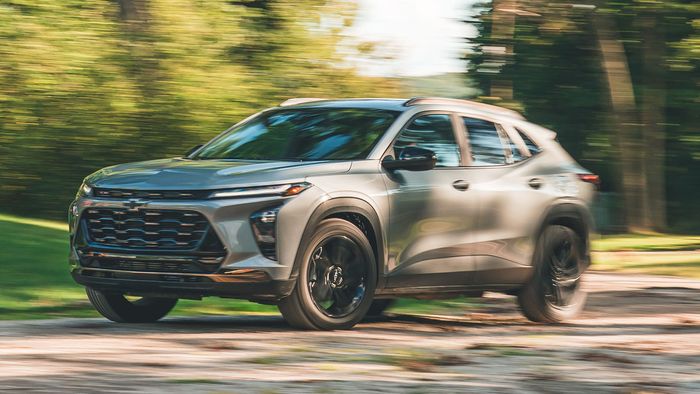
2024 Mazda CX-30
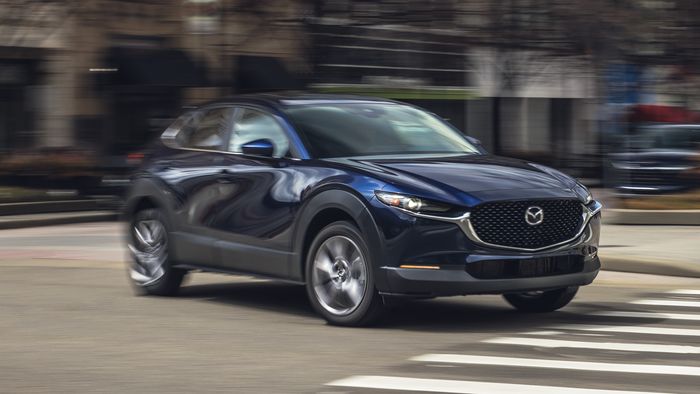
Starting at $26,415 · 9.5/10
Starting at $24,325 · 9.5/10
2024 Buick Envista
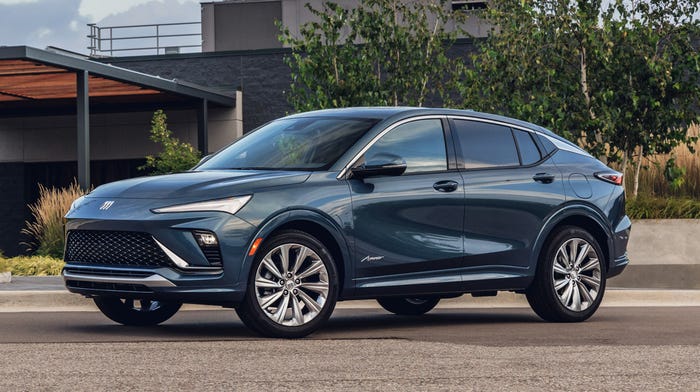
2024 Kia Niro Hybrid

Starting at $28,315 · 8.5/10
Starting at $27,915 · 8.5/10
2024 Subaru Crosstrek
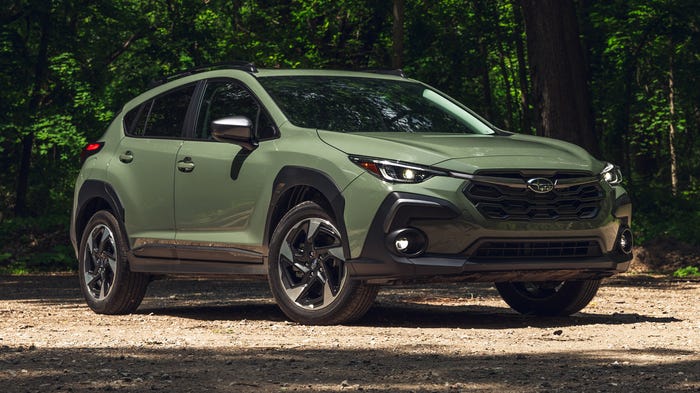
Starting at $26,540 · 8.5/10
Starting at $24,870 · 8/10
2024 Hyundai Kona
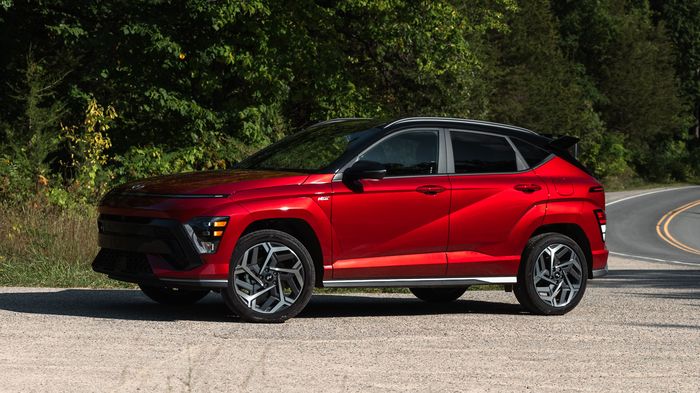
Starting at $25,625 · 8.5/10
Starting at $23,475 · 9/10
2024 Kia Soul
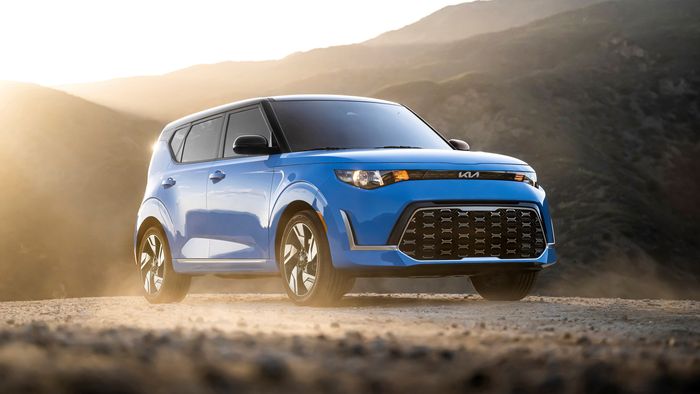
Starting at $21,565 · 8/10
Starting at $21,215 · 8.5/10
2024 Kia Seltos
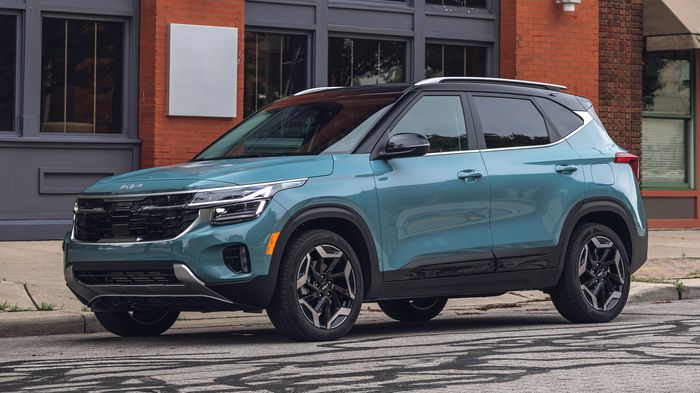
Starting at $25,865 · 8/10
Starting at $24,665 · 8/10
2024 Honda HR-V
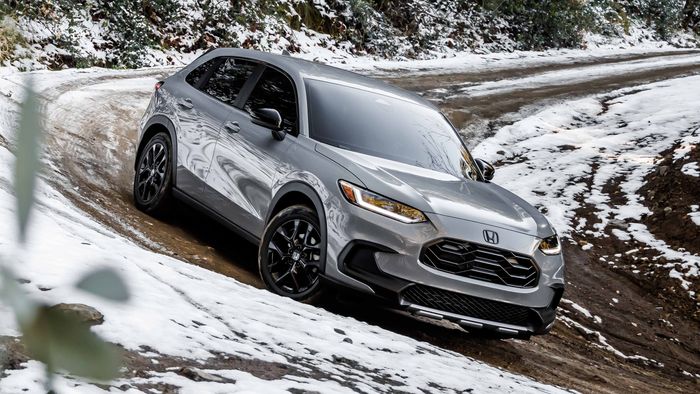
Starting at $25,950 · 8/10
Starting at $25,150 · 8/10
2024 Hyundai Venue
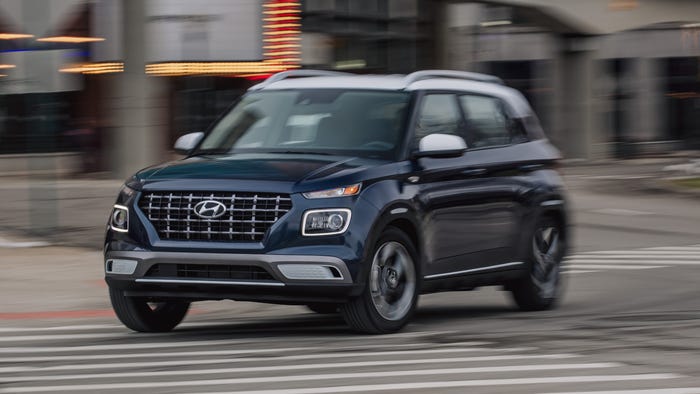
Starting at $21,275 · 8/10
Starting at $20,985 · 8/10
2024 Toyota Corolla Cross Hybrid

Starting at $29,570 · 7.5/10
Starting at $29,305 · 7.5/10
2024 Toyota Corolla Cross

Starting at $25,210 · 7.5/10
Starting at $24,960 · 7.5/10
More From Volkswagen
2025 volkswagen id.7.
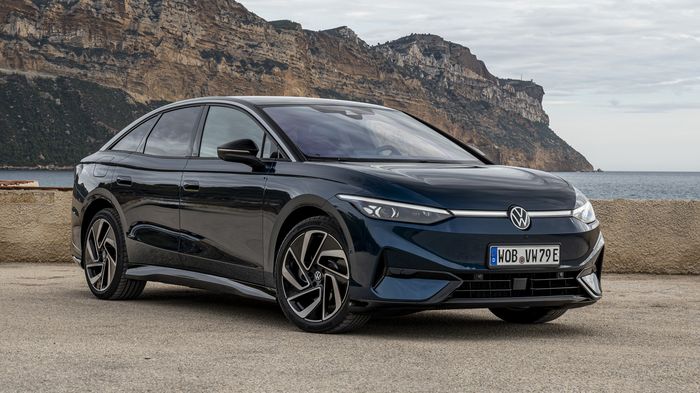
2026 Volkswagen ID.8

2025 Volkswagen ID.Buzz Microbus
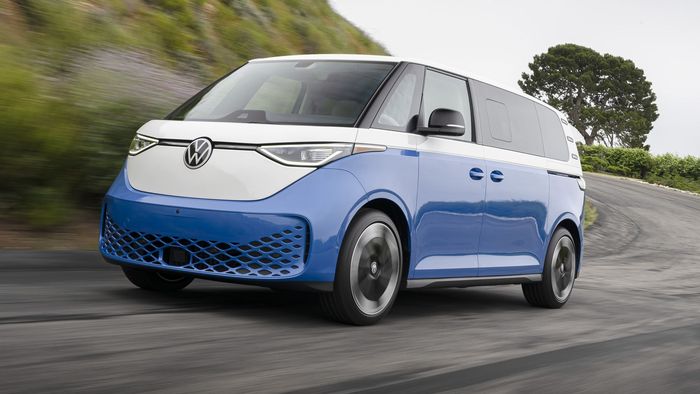
2023 Volkswagen Arteon
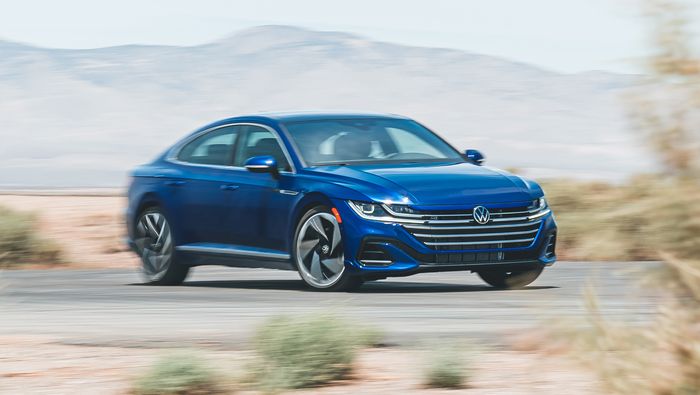
Starting at $44,305 · 8/10
Starting at $42,045 · 8/10
Starting at $38,190 · 8/10
Starting at $37,015 · 7.5/10
Starting at N/A · 8/10
2024 Volkswagen Atlas
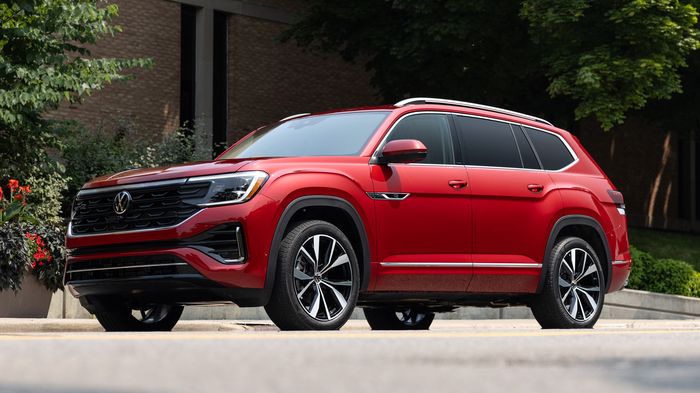
Starting at $39,420 · 7/10
Starting at $36,445 · 7/10
Starting at $35,630 · 7/10
Starting at $32,565 · 7/10
Starting at $32,565 · 8/10
Starting at $31,890 · 9/10
Starting at N/A · 9/10
2024 Volkswagen Atlas Cross Sport
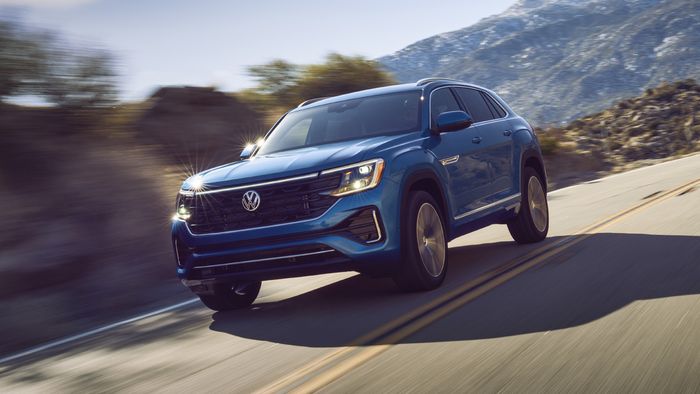
Starting at $38,410 · 6.5/10
Starting at $35,755 · 6.5/10
Starting at $34,930 · 6.5/10
Starting at $32,050 · 6.5/10
Starting at $31,565 · 6.5/10
2025 Volkswagen Golf GTI
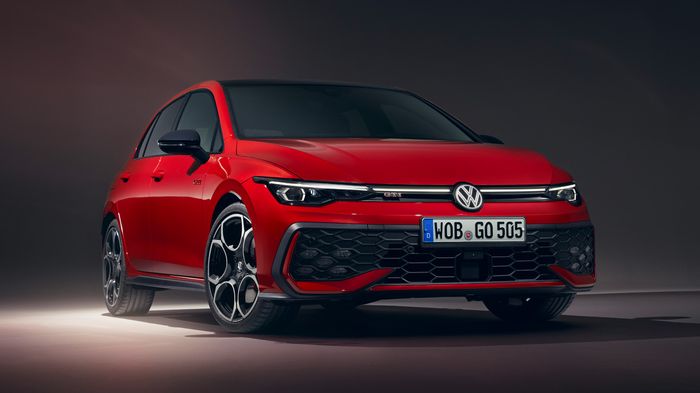
Starting at $34,000 est
Starting at $33,190 · 9/10
Starting at $31,625 · 9/10
Starting at $30,975 · 10/10
Starting at $29,690 · 10/10
Starting at $29,515 · 10/10
Starting at $28,490 · 10/10
Starting at $27,310 · 10/10
Starting at $25,815 · 10/10
2025 Volkswagen Golf R
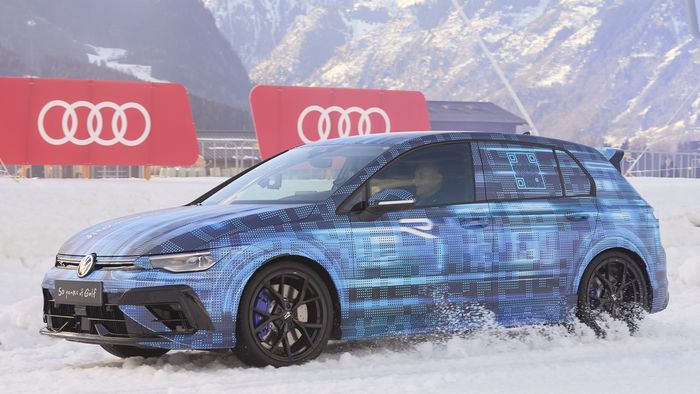
Starting at $48,000 est
Starting at $46,890 · 9/10
Starting at $45,835 · 9/10
Starting at $45,185 · 9.5/10
Starting at $41,290 · 8/10
2024 Volkswagen ID.4
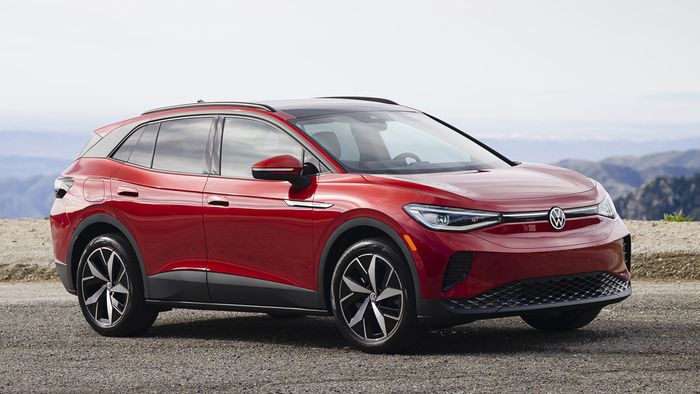
Starting at $41,160 · 8.5/10
Starting at $40,290 · 8.5/10
Starting at $42,525 · 8.5/10
Starting at $41,190 · 8/10
2024 Volkswagen Jetta
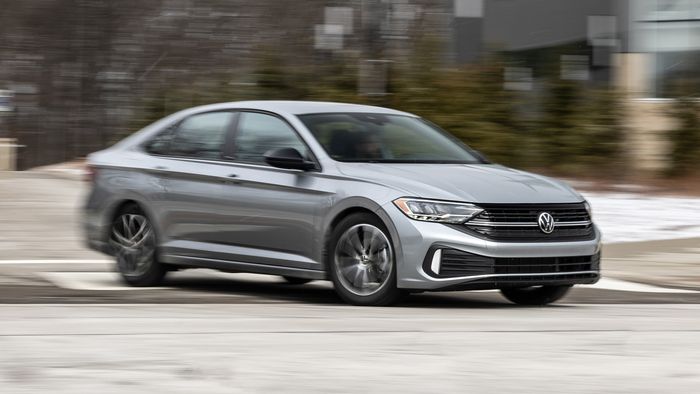
Starting at $22,660 · 8.5/10
Starting at $21,750 · 8.5/10
Starting at $21,460 · 8.5/10
Starting at $19,990 · 8/10
Starting at $19,815 · 8/10
Starting at $19,640 · 7/10
Starting at N/A · 7/10
2024 Volkswagen Jetta GLI
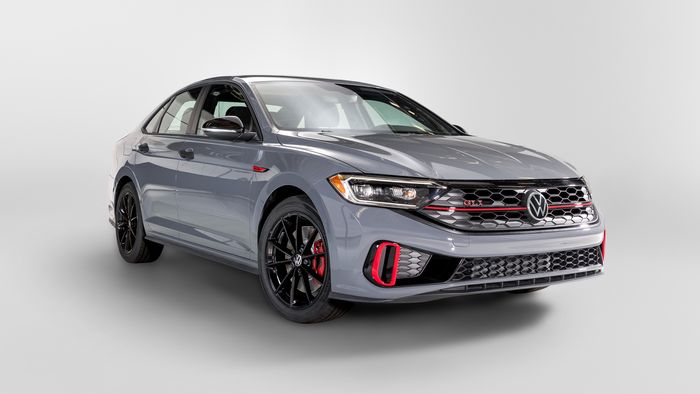
Starting at $29,310 · 8.5/10
Starting at $32,680 · 8.5/10
Starting at $32,390 · 8.5/10
Starting at $27,340 · 10/10
Starting at $27,165 · 10/10
Starting at N/A · 10/10
2025 Volkswagen Tiguan

Starting at $29,000 est
Starting at $30,305 · 9/10
Starting at $28,245 · 9/10
Starting at $27,785 · 9.5/10
Starting at $26,440 · 9.5/10
Starting at $25,965 · 9.5/10
Starting at $25,290 · 8/10
Starting at N/A · 6/10

Take A Tour Of Volkswagen's First Electric Wagon In Walkaround Video
We got up close and personal with the id.7 tourer..
E lectric wagons are sadly still few and far between in 2023, but Volkswagen is about to address this long-roof EV penury with this – the ID.7 Tourer. Our colleagues at Motor1.com Italy got up close with Wolfsburg's first estate without a combustion engine in Marseille, France ahead of the official release, hence why it's still camouflaged. If you're Italian is a bit rusty, you can auto-generate subtitles in your preferred language.
Sharing the MEB platform with the ID.7 sedan (it's technically a hatchback) and all the other bespoke electric cars from Volkswagen, the zero-emission wagon wants to be the antidote to an SUV world. Being a dedicated EV, it's not related to the new-and-not-for-America Passat Variant or the Arteon Shooting Brake, even though the exterior styling might tempt you to believe it has a connection with the former. The body wrap isn't really hiding anything on this big wagon with its impressively low drag coefficient of just 0.24, almost matching the sedan's 0.23.
Being a wagon, it's all about practicality. VW quotes a cargo capacity of 545 liters with the rear seats in place, which works out to 19.2 cubic feet. Fold the bench and the volume jumps to 1,714 liters (60.5 cubic feet). The German automaker wishes to point out you can cram in items nearly two meters (78.7 inches) long after folding the rear seats.
The ID.7 Tourer is being described as an "elegant full-sized hatchback version," and some will recall VW previewed it four years ago. Indeed, the ID. Space Vizzion concept premiered in November 2019 at the Los Angeles Auto Show. During the event, we spoke with then-CEO Scott Keogh – who's currently CEO at newly founded Scout Motors – about the prospects of selling the wagon in the US. After all, it did debut in L.A.
He suggested a potential US-bound variant would have more rugged styling in the same vein as the Alltrack models. He admitted extra body cladding, bigger wheels with meaty tires, and roof rails might negatively impact range but that's a sacrifice the company is willing to make.
We're keeping our fingers crossed for the ID.7 Tourer to land stateside where VW will sell the sedan variant from 2024. The wagon is going to be manufactured in Germany at the Emden plant where the saloon is slated to roll off the assembly line. VW also makes the ID.4 at the factory located in the northwestern part of the country.
Following its world premiere in the near future, the ID.7 Tourer will initially go on sale in Europe in the second half of next year.
Electric Wagons Are A Rarity:
- Audi A6 E-Tron Electric Wagon Hides Its Aerodynamic Body Under Camouflage
- BMW i5 Touring Spied In Light Camo Lapping The Nurburgring

- Premier Liga , Round 21
Ural Yekaterinburg vs FC Rostov live score, H2H results, standings and prediction
Highest rated players, who will win.
- Find out who scored in a live match
- Get real-time information on which team is dominating the match using the Attack Momentum
- Follow detailed statistics such as ball possession, shots, corner kicks, big chances created, cards, key passes, duels and more
- Check all head to head matches – for instance, in the last season Ural Yekaterinburg and FC Rostov played 2 games against each other
- Track all home and away games for each team in the Premier Liga
- Check out how Sofascore community votes on which team is more likely to win this match.
(e.g. [email protected])
Remember me
Forgot Password?

- SECRETARY OF DEFENSE LLOYD J. AUSTIN III
- Combatant Commands
- Holiday Greetings Map
- Taking Care of Our People
- Focus on the Indo-Pacific
- Support for Ukraine
- Value of Service
- Face of Defense
- Science and Technology
- Publications
- Storytellers
- Tell Your Story
- Media Awards
- Hometown Heroes
Hometown News
- Create Request
- Media Press Kit

- DVIDS DIRECT
Media Requests
About dvids.
- Privacy & Security
- Copyright Information
- Accessibility Information
- Customer Service
Tour group makes April 2024 visit to Fort McCoy's Commemorative Area [Image 3 of 22]

FORT MCCOY, WI, UNITED STATES
Photo by scott sturkol february 2024"> january 2024"> december 2023"> november 2023"> october 2023"> september 2023"> august 2023"> august 2023"> july 2023"> june 2023"> may 2023"> april 2023"> march 2023"> february 2023"> january 2023"> december 2022"> december 2022"> november 2022"> october 2022"> october 2022"> september 2022"> august 2022"> july 2022"> june 2022"> april 2022"> march 2022"> february 2022"> january 2022"> december 2021"> november 2021"> october 2021"> september 2021"> august 2021"> july 2021"> june 2021"> may 2021"> april 2021"> march 2021"> february 2021"> february 2021"> january 2021"> january 2021"> december 2020"> december 2020"> november 2020"> november 2020"> october 2020"> september 2020"> august 2020"> july 2020"> june 2020"> may 2020"> april 2020"> march 2020"> february 2020"> january 2020"> december 2019"> november 2019"> october 2019"> october 2019"> september 2019"> august 2019"> july 2019"> june 2019"> may 2019"> april 2019"> march 2019"> february 2019"> january 2019"> december 2018"> october 2018"> september 2018"> august 2018"> july 2018"> june 2018"> may 2018"> april 2018"> march 2018"> february 2018"> january 2018"> december 2017"> november 2017"> october 2017"> september 2017"> august 2017"> july 2017"> may 2017"> , fort mccoy public affairs office february 2024"> january 2024"> december 2023"> november 2023"> october 2023"> .
Visitors to the Fort McCoy History Center look at artifacts and displays in the center April 14, 2024, at Fort McCoy, Wis. A tour group of people from Michigan visited the Fort McCoy Commemorative Area on April 14 to learn more about Army history and heritage and of Fort McCoy's history. The tour was hosted by the Fort McCoy Public Affairs Office. (U.S. Army Photo by Scott T. Sturkol, Public Affairs Office, Fort McCoy, Wis.)
LEAVE A COMMENT
Public domain .
This work, Tour group makes April 2024 visit to Fort McCoy's Commemorative Area [Image 22 of 22] , by Scott Sturkol , identified by DVIDS , must comply with the restrictions shown on https://www.dvidshub.net/about/copyright .

MORE LIKE THIS
Associated news, tour group makes april 2024 visit to fort mccoy's commemorative area, controlled vocabulary keywords.
No keywords found.
- Register/Login to Download
DVIDS Control Center
- 404-282-1450
- [email protected]
Web Support
- [email protected]
- 1-888-743-4662
- Links Disclaimer
- No FEAR Act
- Small Business Act
- Open Government
- Strategic Plan
- Inspector General
- Sexual Assault Prevention
- DVI Records Schedule
- DVI Executive Summary
- Section 3103

Wisdom from a Former Tour Pro, Josh Salah The Accelerate Golf Podcast
Welcome to an international edition of the Accelerate Golf Podcast! In this episode, we're joined by Josh Salah, a former professional golfer who left his mark on the Asian Development Tour. Join us as we embark on Josh's journey from his early days in golf to clinching two professional wins. Through engaging dialogue, Josh reminisces about pivotal moments in his career, unveiling the strategies, perseverance, and determination that propelled him in the golfing realm. Dive into the mental and physical hurdles he encountered while striving to establish himself professionally. From navigating the ups and downs of playing in the U.S. mini tours to the financial backing that fueled his ambitions, to his triumphs on the Asian Development Tour, each peak and valley adds layers to an enthralling narrative. As the conversation unfolds, we delve into Josh's captivating odyssey of building his career in Asia. Hear his candid reflections on the challenges, victories, and a behind-the-scenes look at the golf industry. The discussion wraps up with captivating tales from his travels and a reflection on the demanding lifestyle of a pro golfer. Throughout this episode, you'll discover Josh's profound love, passion, and dedication to golf. From refining his game to continuously learning from seasoned pros, this episode offers unique insights into his journey and unwavering commitment to the sport. Packed with invaluable advice, heartfelt moments, and inspiring triumphs, this episode provides a holistic view of the life of a professional golfer, sprinkled with lessons that every golf enthusiast can cherish. Tune in for a riveting exploration of the professional golfing world through the lens of someone who's lived it. Intro and outro music: “Silent Night” by Infraction Music.
- Episode Website
- More Episodes
- Copyright 2024 All rights reserved.

IMAGES
VIDEO
COMMENTS
Quickly comparing my ID.3 - a top-spec Pro S Tour variant, with the big battery and loads of kit - alongside a similarly equipped Golf (1.5 eTSI R-Line 150 DSG), shows how much the average ...
Interior, dashboard & infotainment rating. 3.5 out of 5. Fuel Type: Electric. Price & Specification. The Volkswagen ID.3 is part of a new generation of cars with barely any physical buttons in the cabin. Almost all controls are contained within the touchscreen display on the dashboard.
So the ID.3 looks more like a car and less like a future spacepod. Changes to the front bumper make it look wider as well as helping some air slip past the wheels more easily. The front wings look ...
Detailed test of the 2024 Volkswagen ID3 Pro S with 77kWh battery. Interior materials upgraded and tech improved, but is the ID3 now up to scratch?The Volksw...
The arrival of the Volkswagen ID.3 GTX marks the introduction of Volkswagen's most powerful production electric motor to date. The entry-level model of the German brand's ID family now welcomes ...
12hrs 15mins (0-100%, 7.4kW) 28 mins (10-80%, 170kW) At launch, the Volkswagen ID.3 was available with three battery options. But as of mid-2023, the smallest (45kWh) of those had been dropped. There are now just two powertrains available: the ID.3 Pro with the 58kWh battery, or the ID.3 Pro S with a larger 77kWh battery and a longer range.
The six-speed automatic 'box is rarely caught out and the 7.4second 0-62mph time is more than enough to make mincemeat of the motorway slog. The ID.3 has a 7.3second 0-62mph. It feels much brawnier off the line but past 30mph the Golf really catches up. It feels heavier than the Golf, but oddly has lighter steering.
Feb 28, 2023 at 6:01pm ET. By: Dan Mihalascu. Two and a half years after the launch of the Volkswagen ID.3, the automaker has unveiled the facelifted variant of the model that inaugurated its ID ...
The Volkswagen ID.3 is good to drive, and a tight turning circle means it's easy to park and move around city streets. The cabin is nice and quiet around town and on the motorway as well, with little road noise infiltrating into the cabin and that near-silent electric motor contributing to the serenity. But the ID.3 is a car of many talents.
In the fast-evolving world of electric vehicles, the 2024 Volkswagen ID.3 stands out as a beacon of innovation and sustainability. This cutting-edge model represents a significant leap forward in electric mobility, combining sleek design with advanced technology. Let's delve into the intricacies of the 2024 Volkswagen ID.3 and discover what sets it apart in the […]
The new facelift ID.3 is expected in 2024, being one of ten new electric Volkswagen models you can expect to see by 2026. Customer feedback has been at the forefront of the new design: introducing a sleek new exterior and refined interior. The latest-generation convenience and assist systems will take the strain out of everyday driving, with ...
Overview. The VW ID 3 is a remarkably well-rounded electric car, proving decent to drive, comfortable and even nippy in Pro Guise. It's quite expensive, though, making it hard to justify over ...
#vwid3 #volkswagen #electriccarsRead the review: https://www.electrifying.com/reviews/volkswagen/new-id-3/reviewNormally we'd expect to see a car updated aft...
First performance ID in frame as VW paves way for diverse electric line-up. Volkswagen bosses are close to signing off plans for a hot, R-badged version of the forthcoming ID 3 electric hatchback ...
The drive: adept all 'round. The ID 3's lounge-like front seats don't exactly pin you in place, and with reasonably stiff suspension needed to support the hefty battery, there's a fair bit of jostling on rougher roads. You couldn't call it uncomfortable, though, and on smoother surfaces it feels very well composed.
Volkswagen's electric Golf may overlap with the ID.3. Volkswagen is celebrating the Golf's 50th anniversary this year after the first model rolled off the assembly line in March 1974. Since ...
The STCC organisation unveiled the first completed Volkswagen ID.3 for the first all-electric season of the championship during the Custom Motor Show in Jönköping, Sweden. "We have now revealed all four electric models ahead of the 2024 STCC season, where the Volkswagen ID.3 joins the Tesla Model 3, CUPRA Born and BMW i4 in a strong and ...
Regardless of what the 2024 Volkswagen ID Buzz nets on the EPA cycle, VW says it will feature a peak charge rate of 170 kW, good for a 5-to-80-percent charge in about 30 minutes. It also ...
The 2024 Volkswagen ID.4 offers RWD or AWD and 62- or 82-kWh battery packs. Compared to the 2023 versions, the 82-kWh models get a considerable boost with a new performance drive unit. With RWD, it generates 282 hp, while the AWD versions deliver 335 hp. The ID.4s with the 62-kWh battery have an electric drive motor that puts out 201 hp.
However, considering the fact that the Volkswagen ID. GTI won't be available for sale until 2027, we can assume the price range of this compact all-electric sports car to be somewhere close to ...
2024 Volkswagen ID4 Pro S Specifications. BASE PRICE. $51,420. PRICE AS TESTED. $51,815. ... 10 Things You Should Know About the 2025 VW ID Buzz 3-Row Electric Van. Aaron Gold | Jun 2, 2023.
The price of the 2024 Volkswagen Taos starts at $25,420 and goes up to $34,940 depending on the trim and options. S. ... View 2024 Volkswagen ID.4 Details. Starting at $41,160 · 8.5/10.
Sharing the MEB platform with the ID.7 sedan (it's technically a hatchback) and all the other bespoke electric cars from Volkswagen, the zero-emission wagon wants to be the antidote to an SUV world.
After taking a 24 hour train ride from Moscow we arrived in Rostov on Don, the capital and largest city in southern Russia. Rostov is one of Russia's most fa...
About the match. Ural Yekaterinburg is going head to head with FC Rostov starting on 25 Apr 2024 at 13:00 UTC at Central Stadium stadium, Ekaterinburg city, Russia. The match is a part of the Premier Liga. Ural Yekaterinburg played against FC Rostov in 1 matches this season. Currently, Ural Yekaterinburg rank 13th, while FC Rostov hold 9th ...
Tour group makes April 2024 visit to Fort McCoy's Commemorative Area [Image 3 of 22] FORT MCCOY, WI, UNITED STATES ... 04.29.2024 11:24: Photo ID: 8366444: VIRIN: 240414-A-OK556-4772: Resolution ...
Dive into the mental and physical hurdles he encountered while striving to establish himself professionally. From navigating the ups and downs of playing in the U.S. mini tours to the financial backing that fueled his ambitions, to his triumphs on the Asian Development Tour, each peak and valley adds layers to an enthralling narrative.
Zach Williams: Revival Nights Tour 2024. Zach Williams Revival Nights Tour 2024. Share: Email Copy Link Facebook Twitter X Pinterest. Event Dates: View Tour. 13 October. Sunday @ 7:00 PM. Scheels Arena, Fargo, ND. ... (3) organization (taxpayer ID Number: 94-2816342). Gifts are tax deductible to the extent allowed by U.S. federal and state tax ...